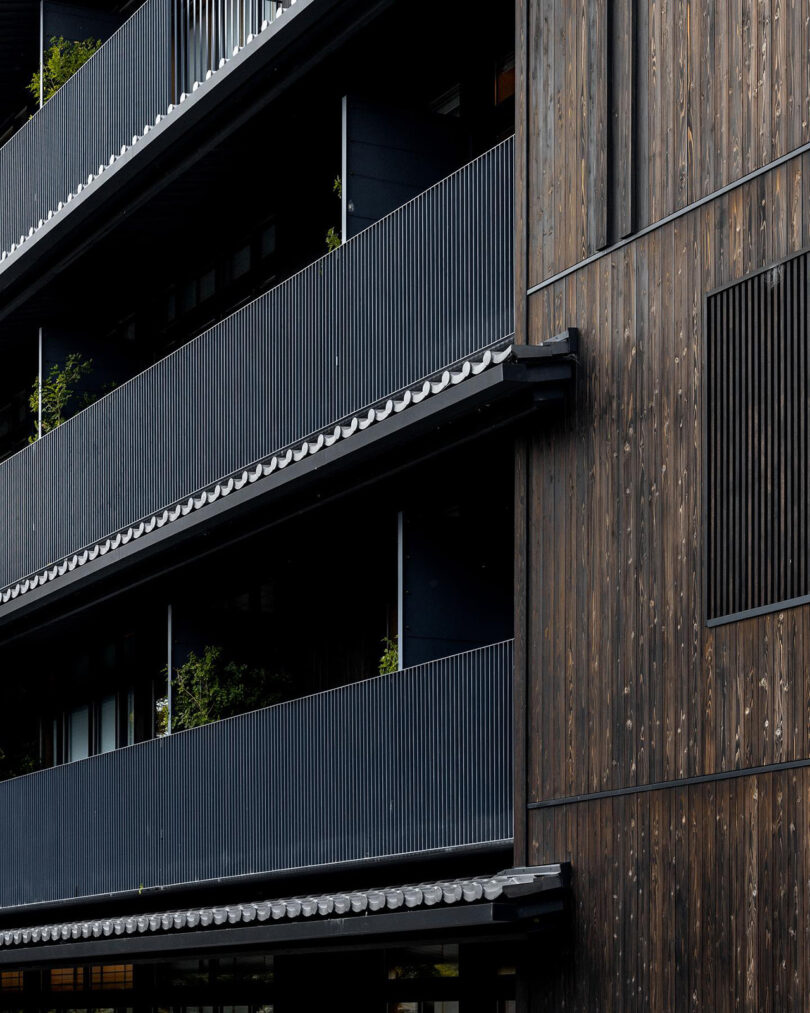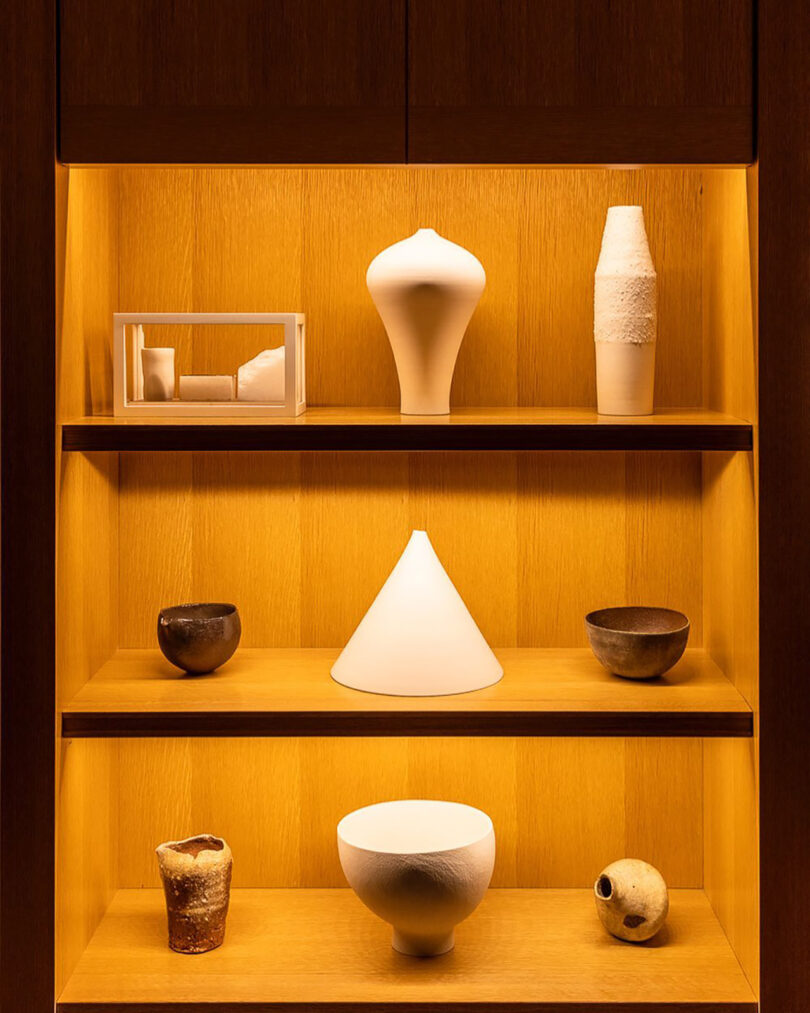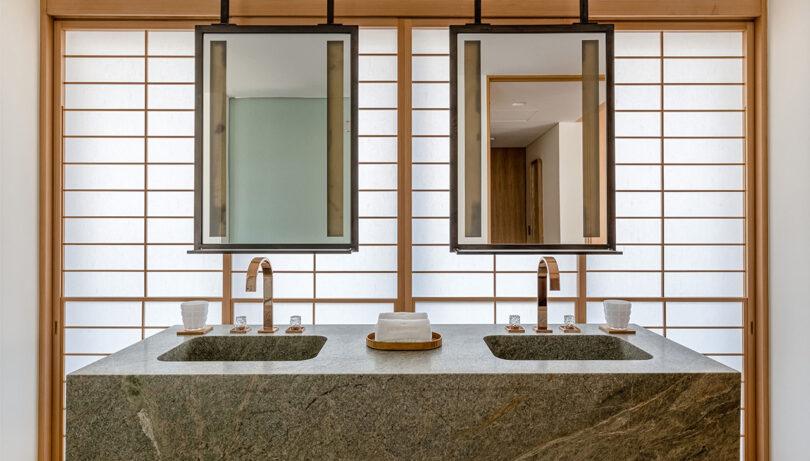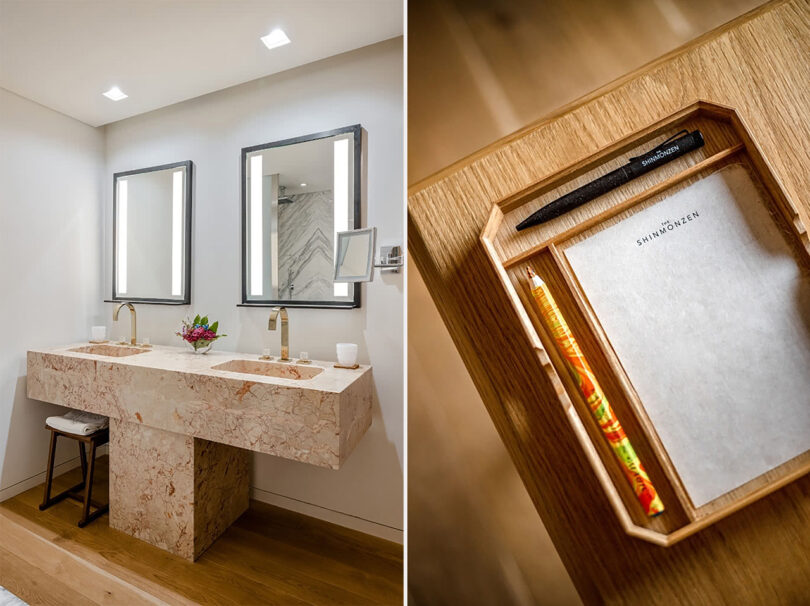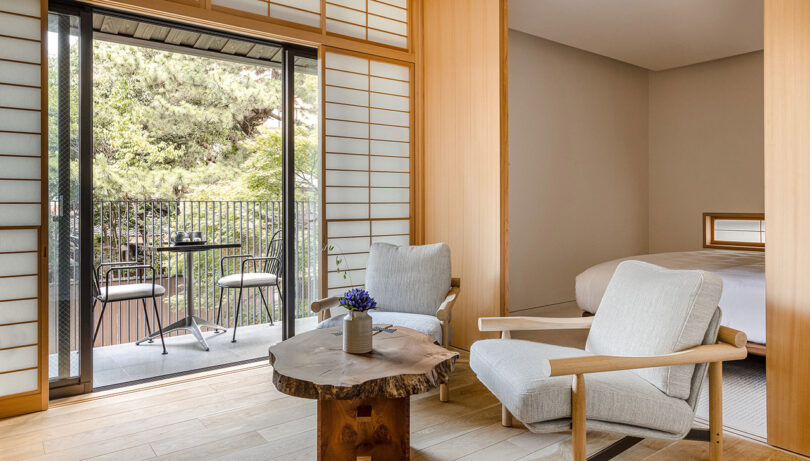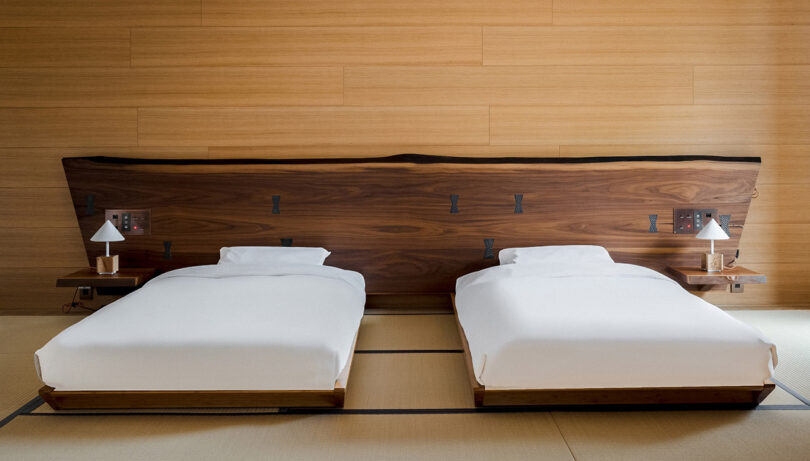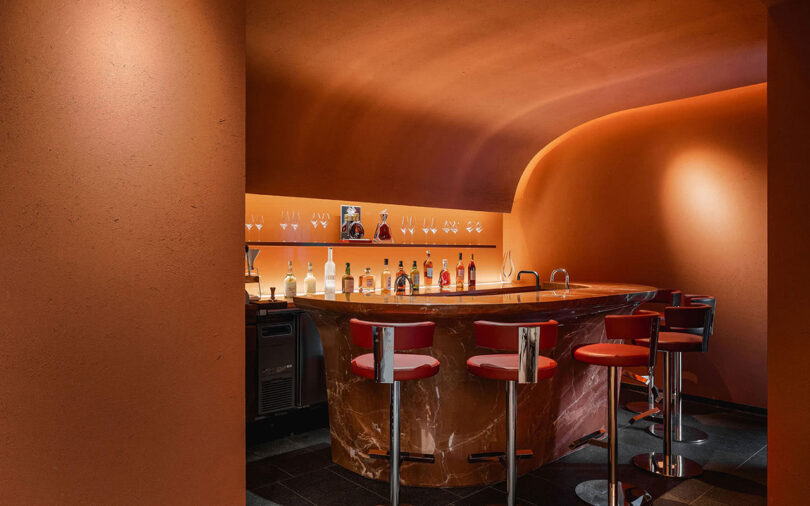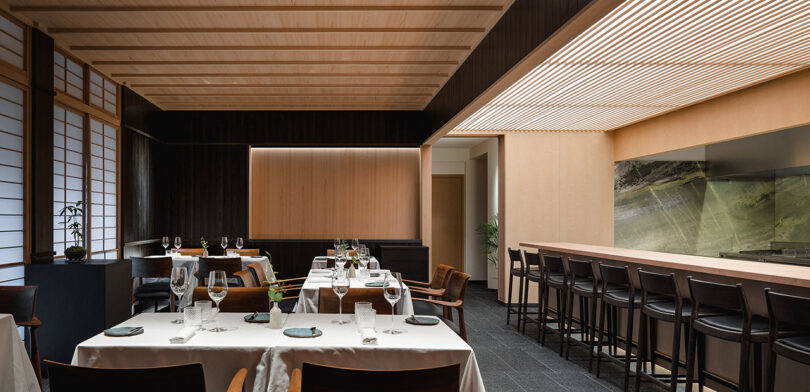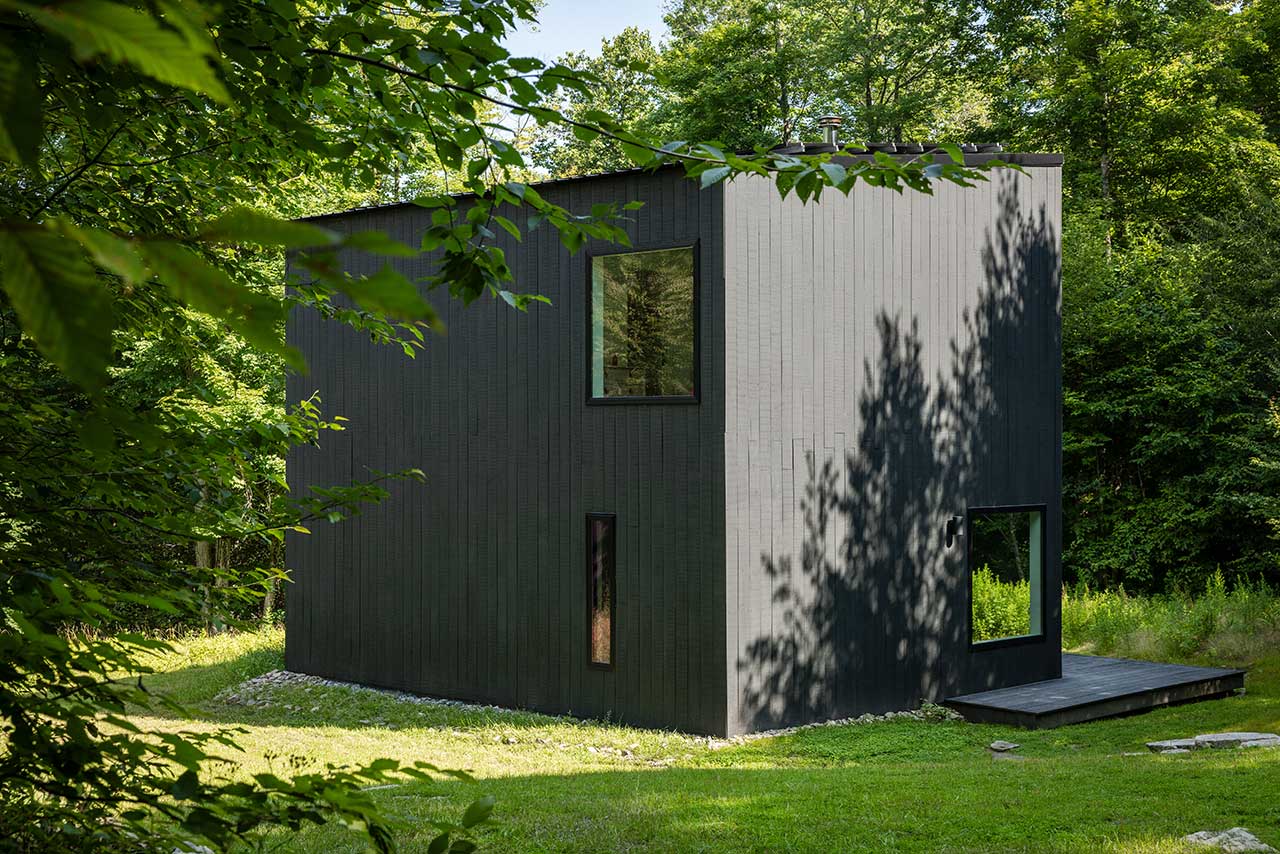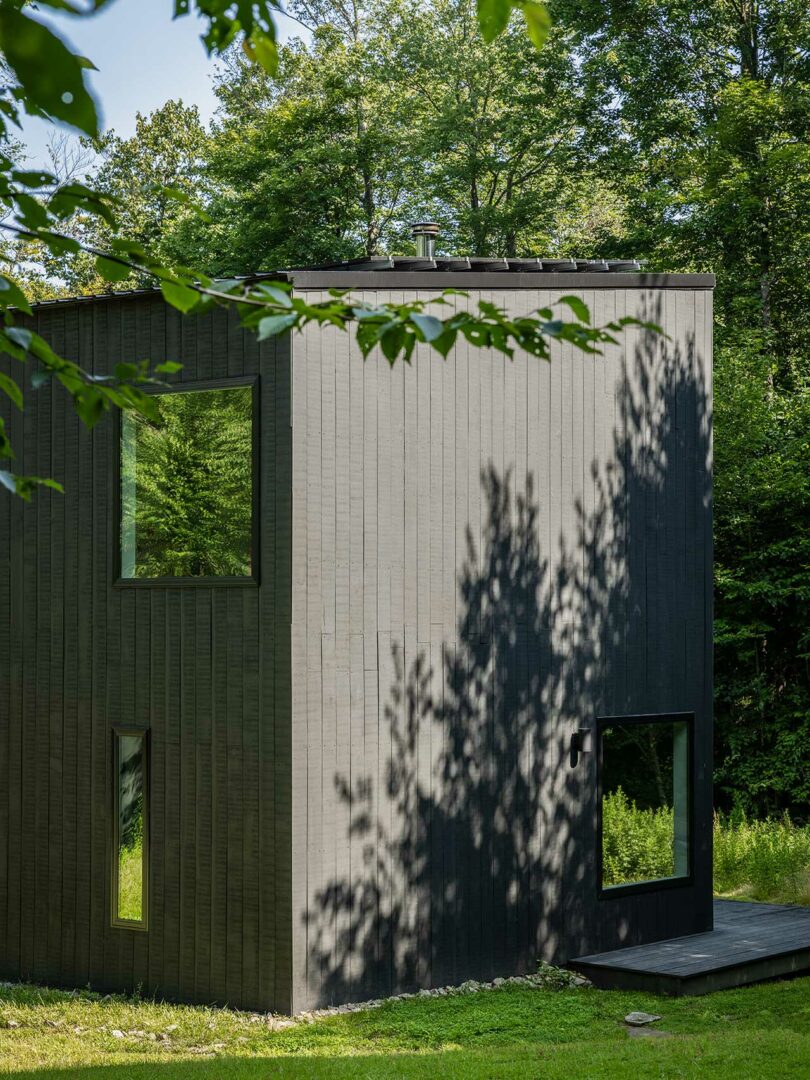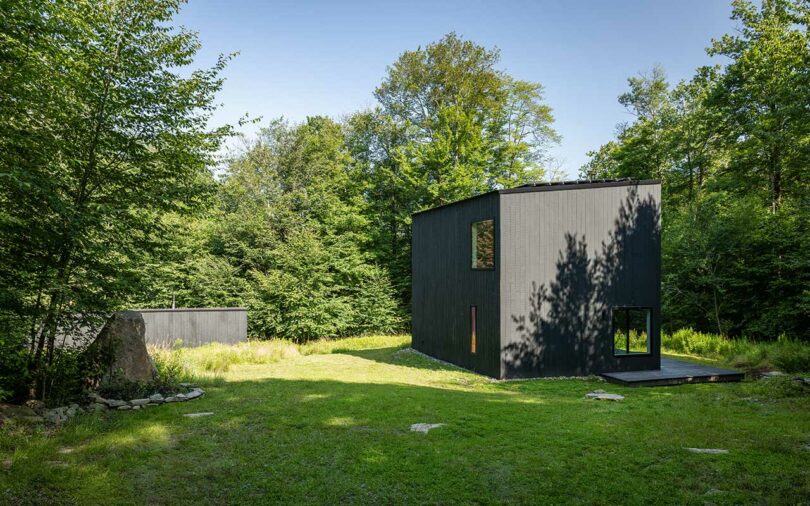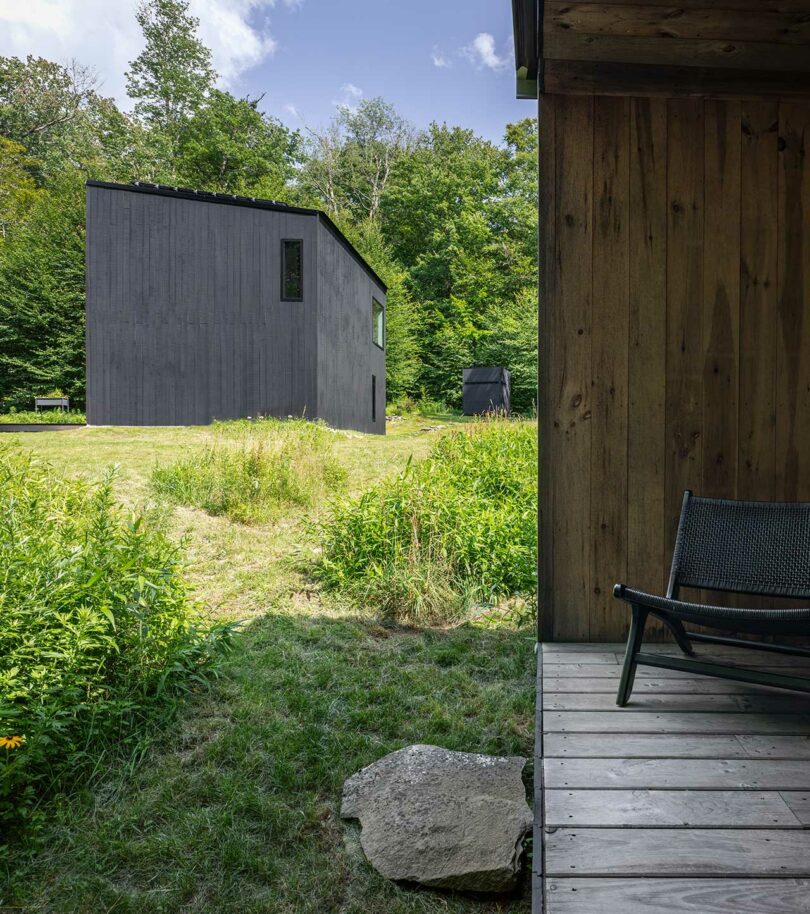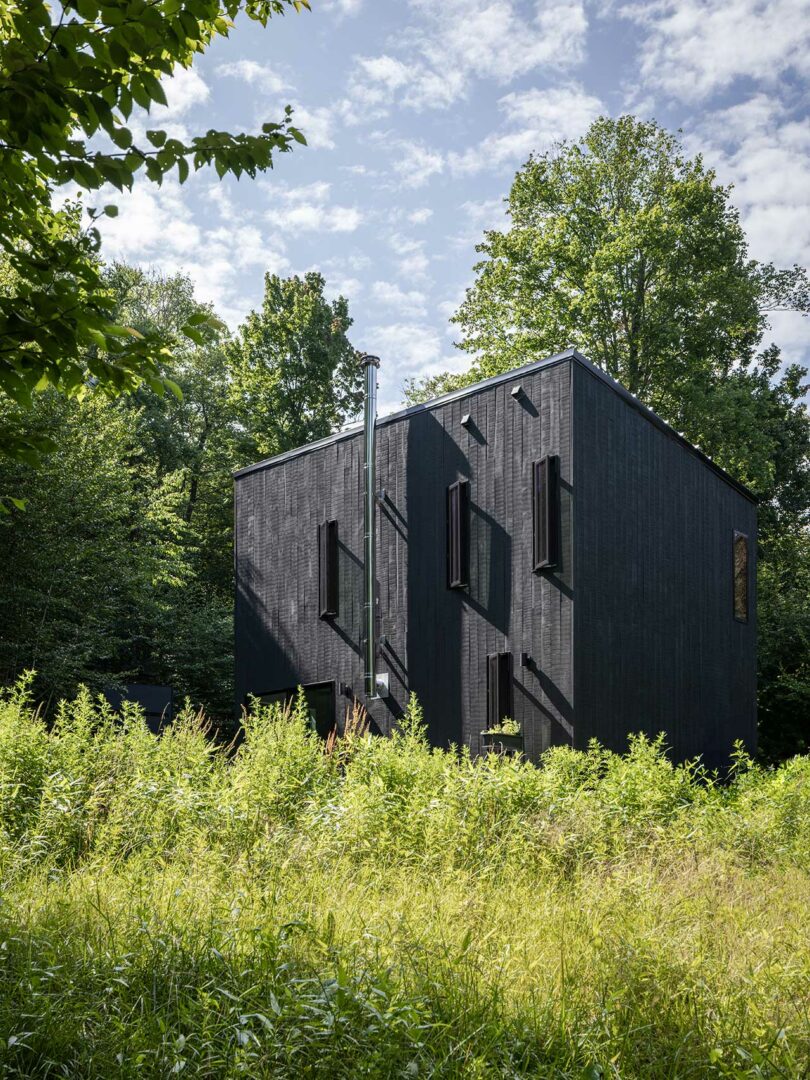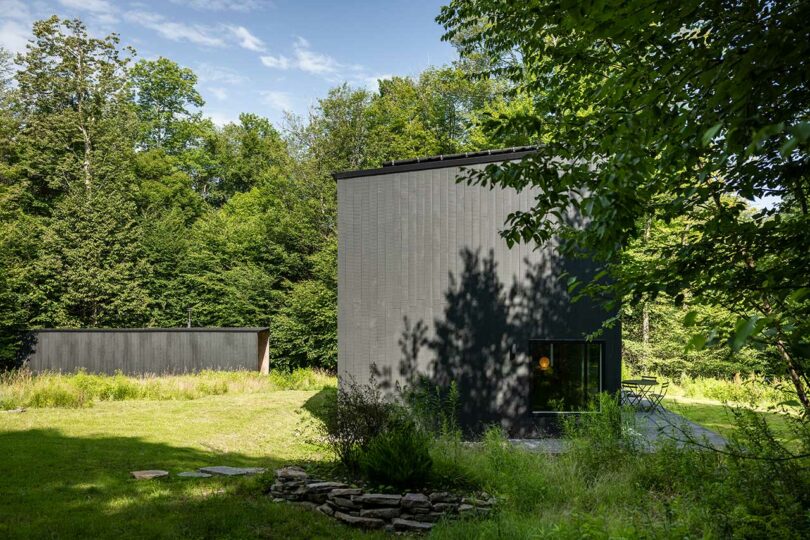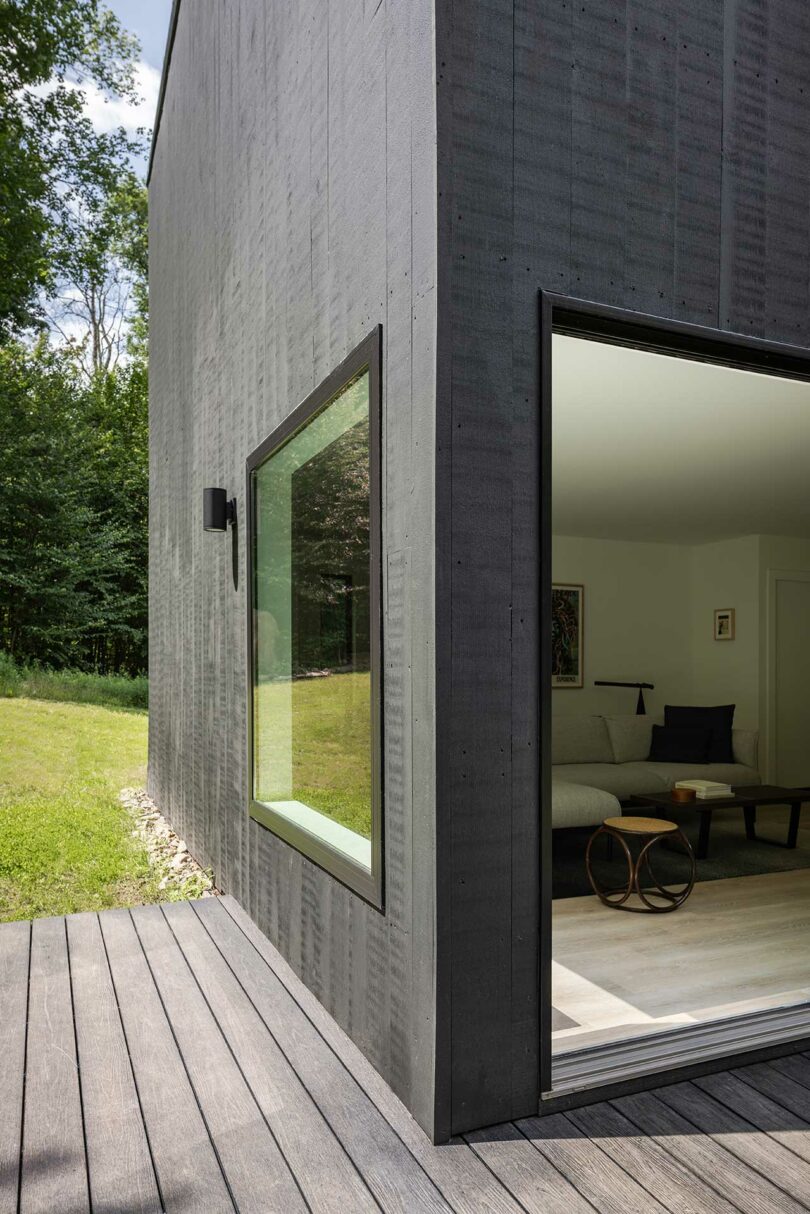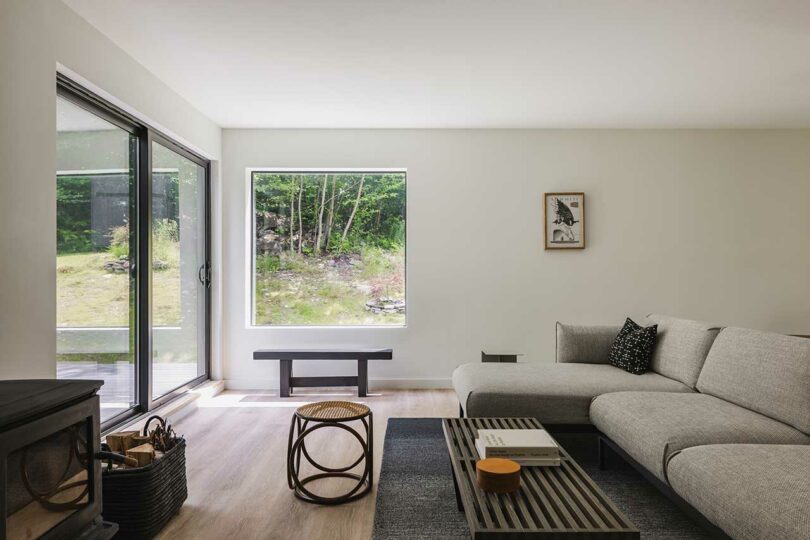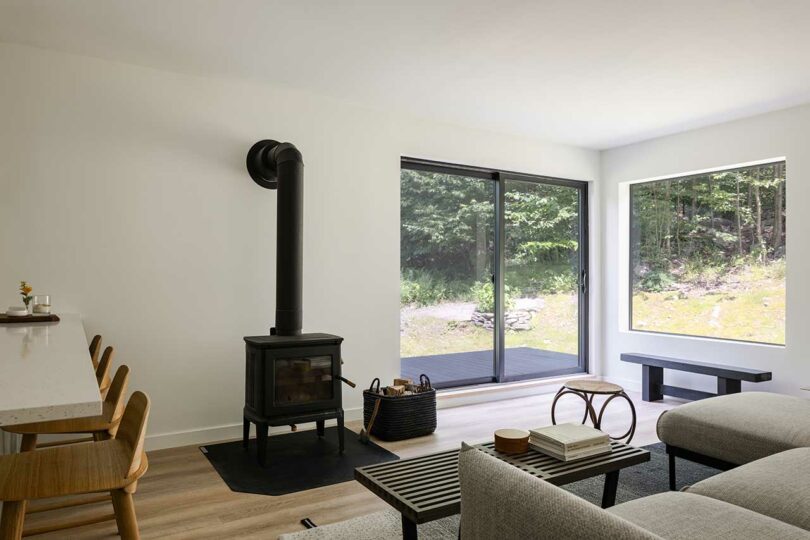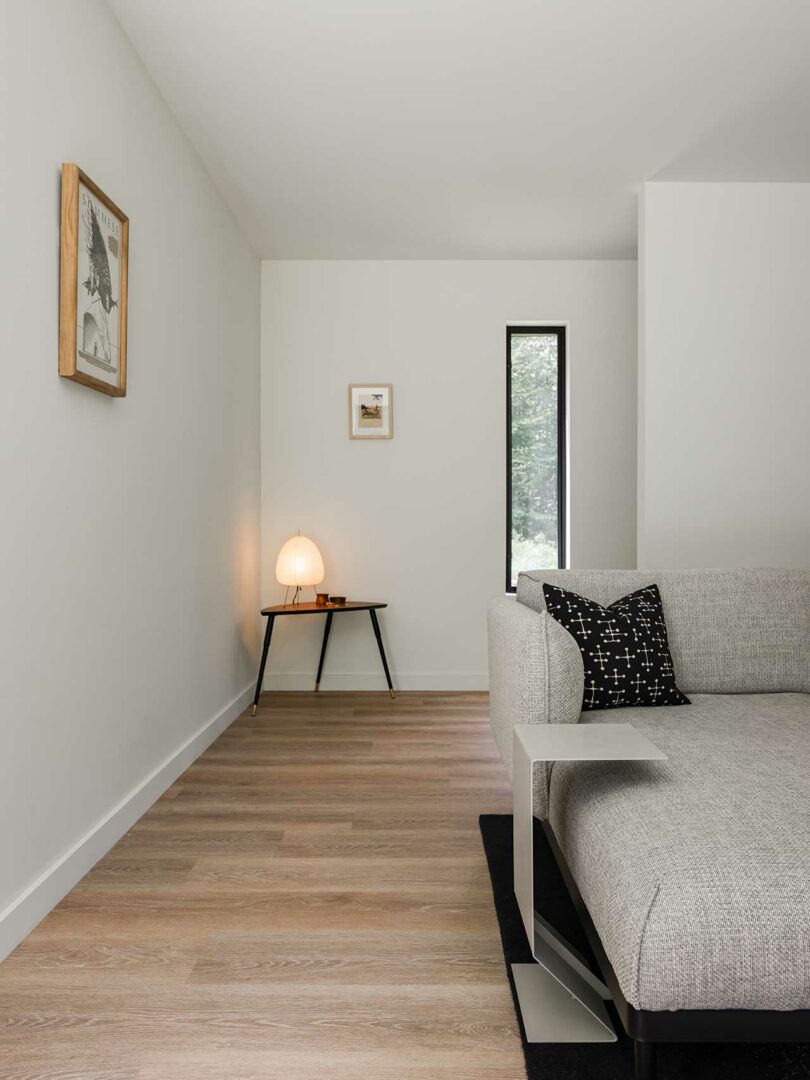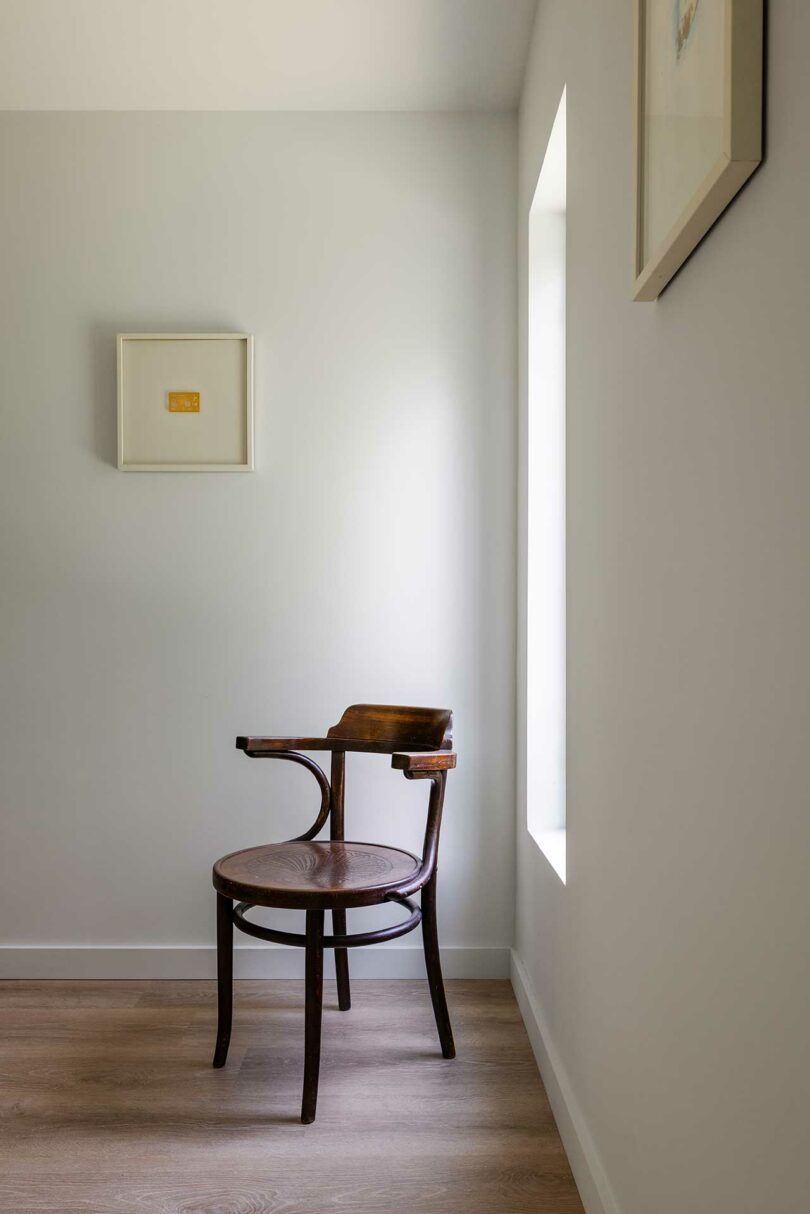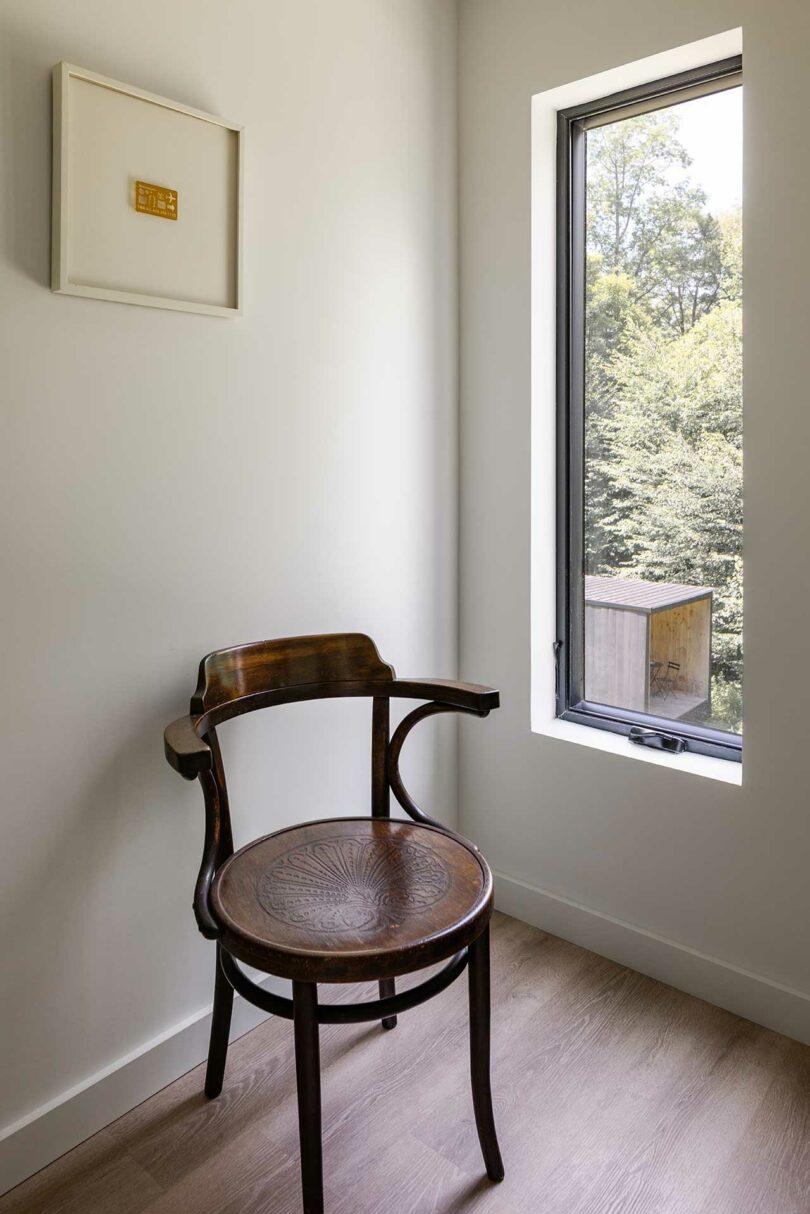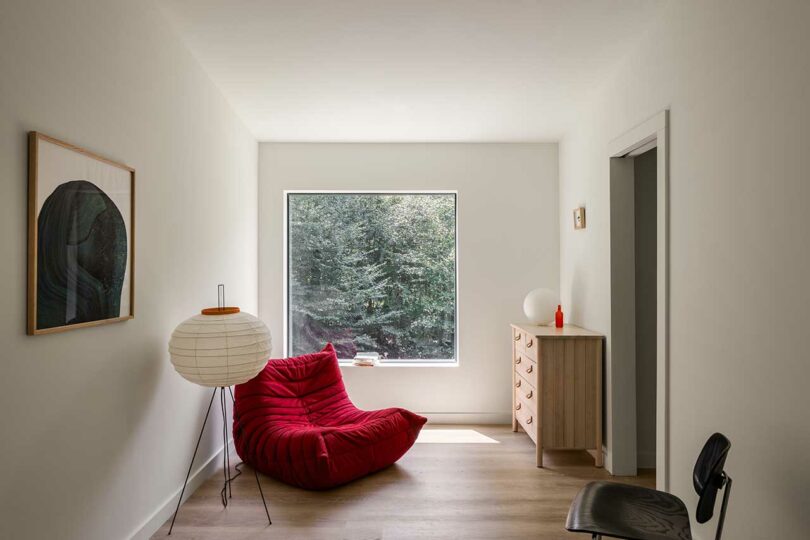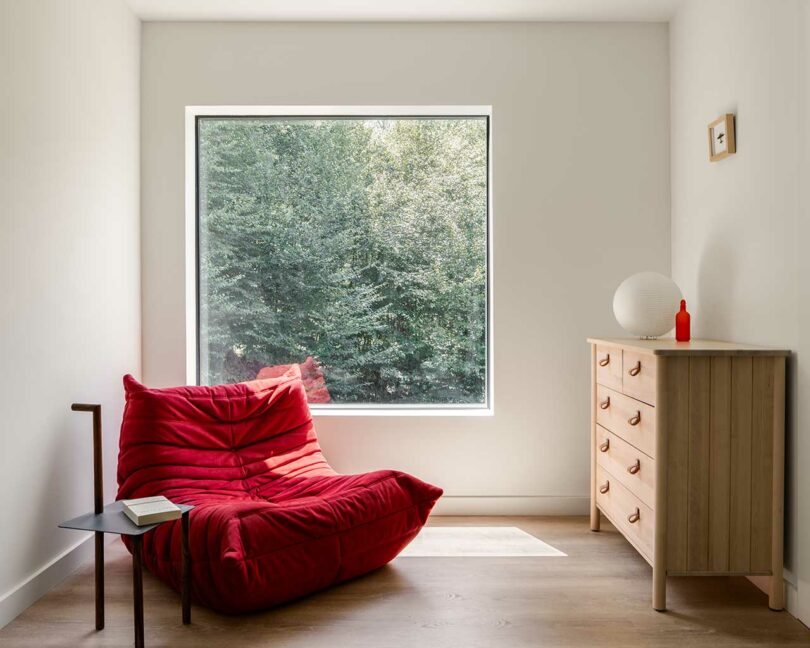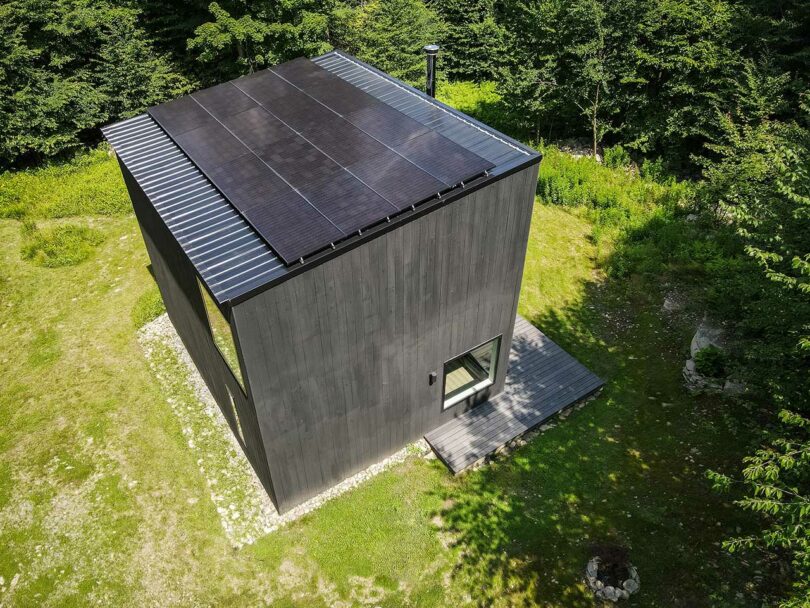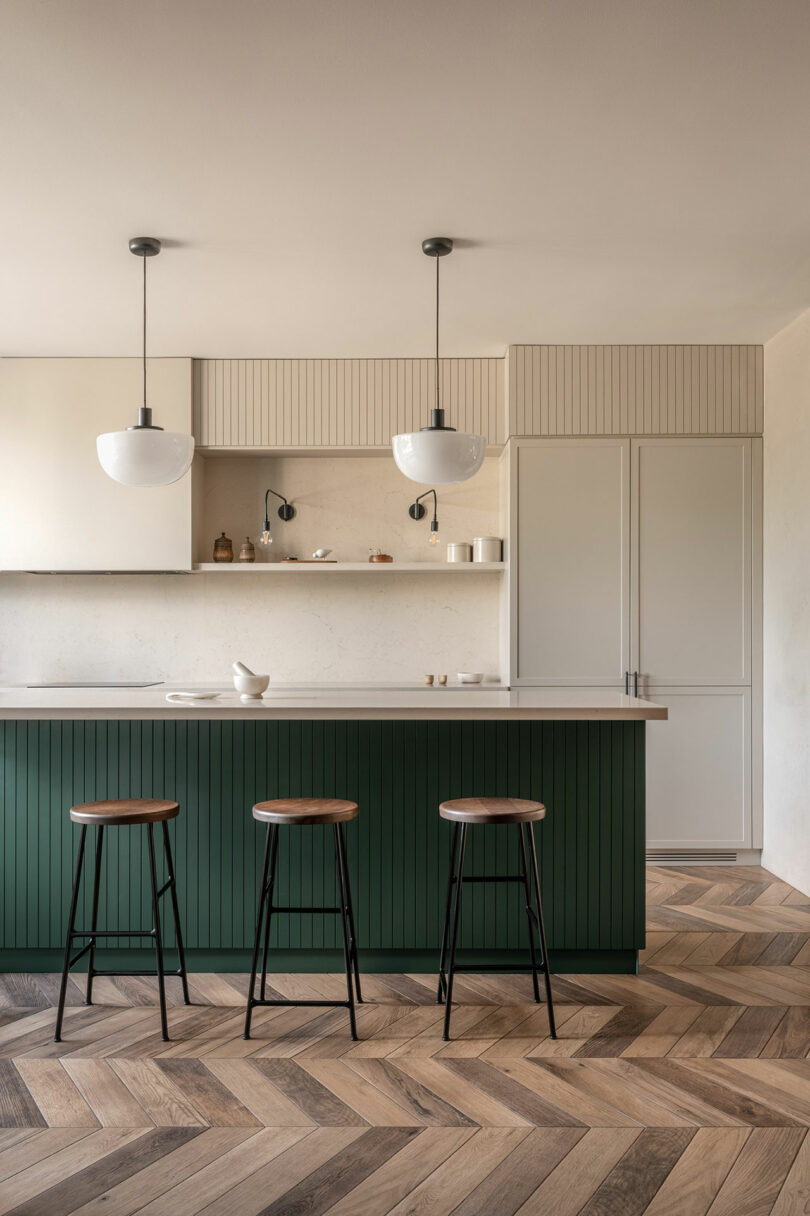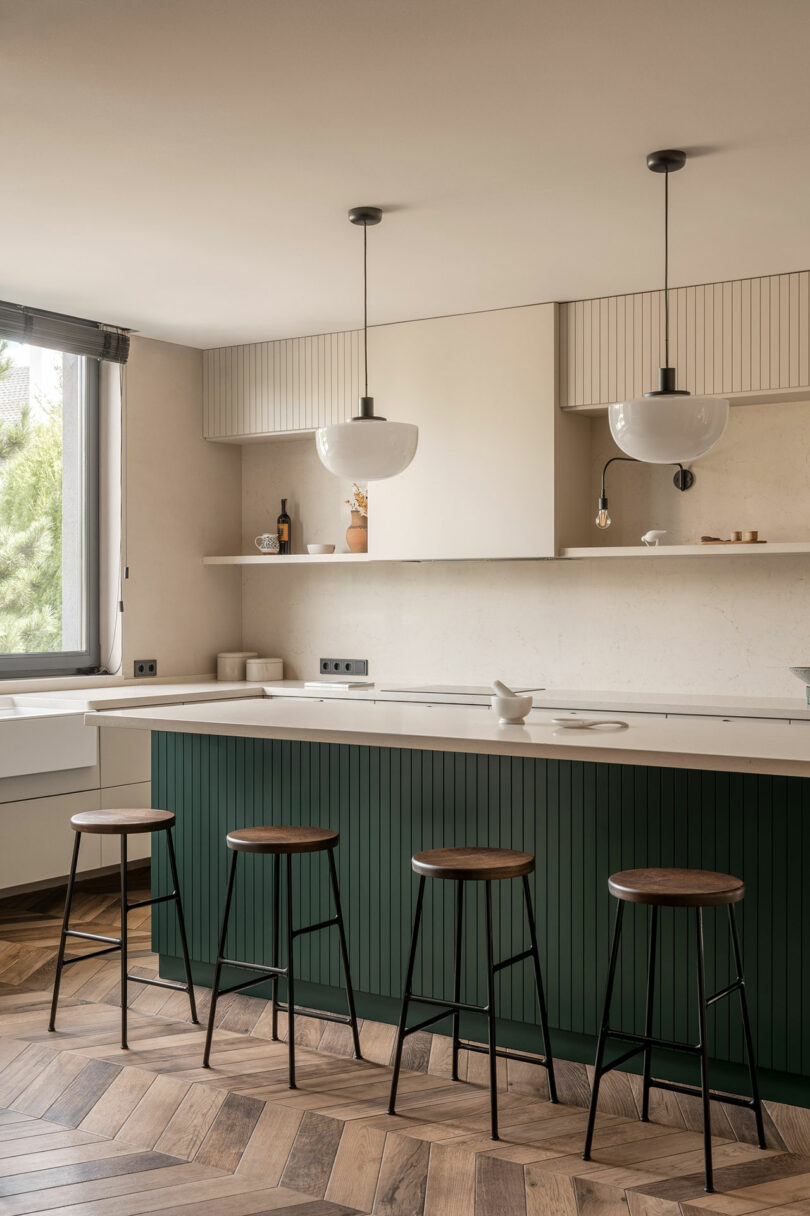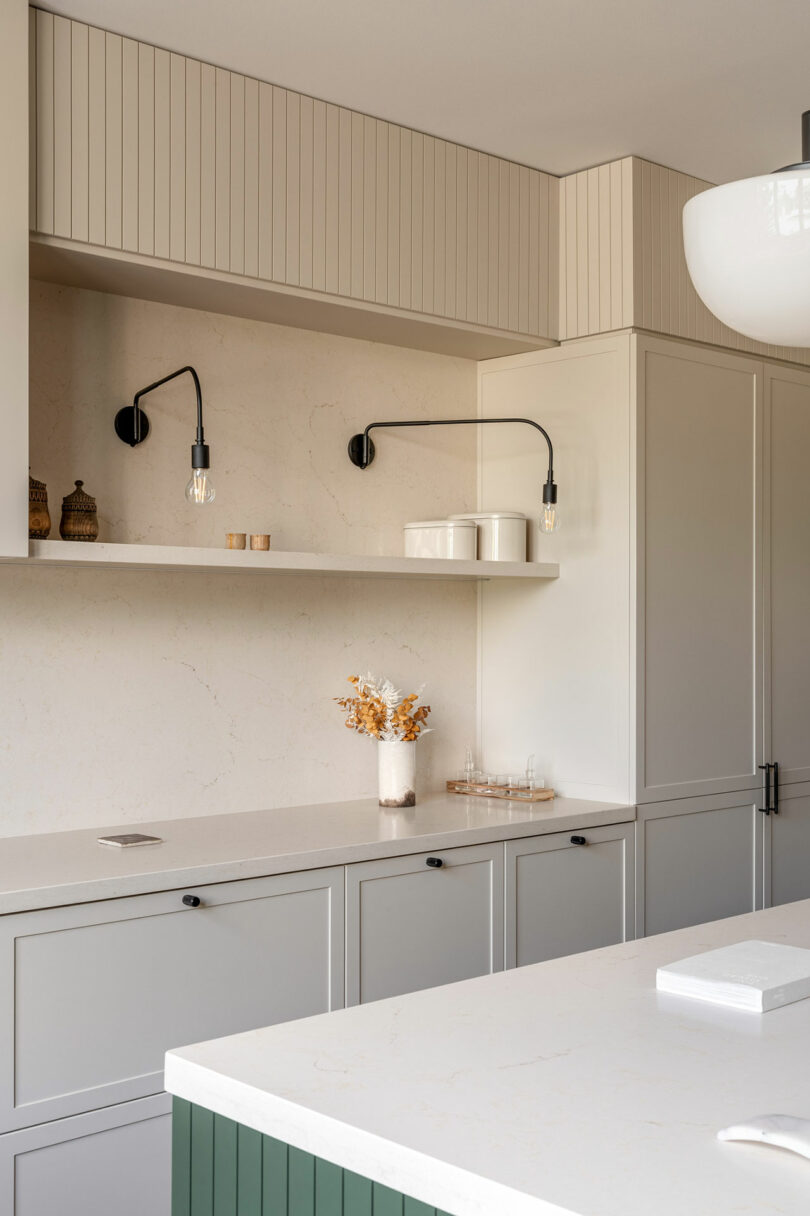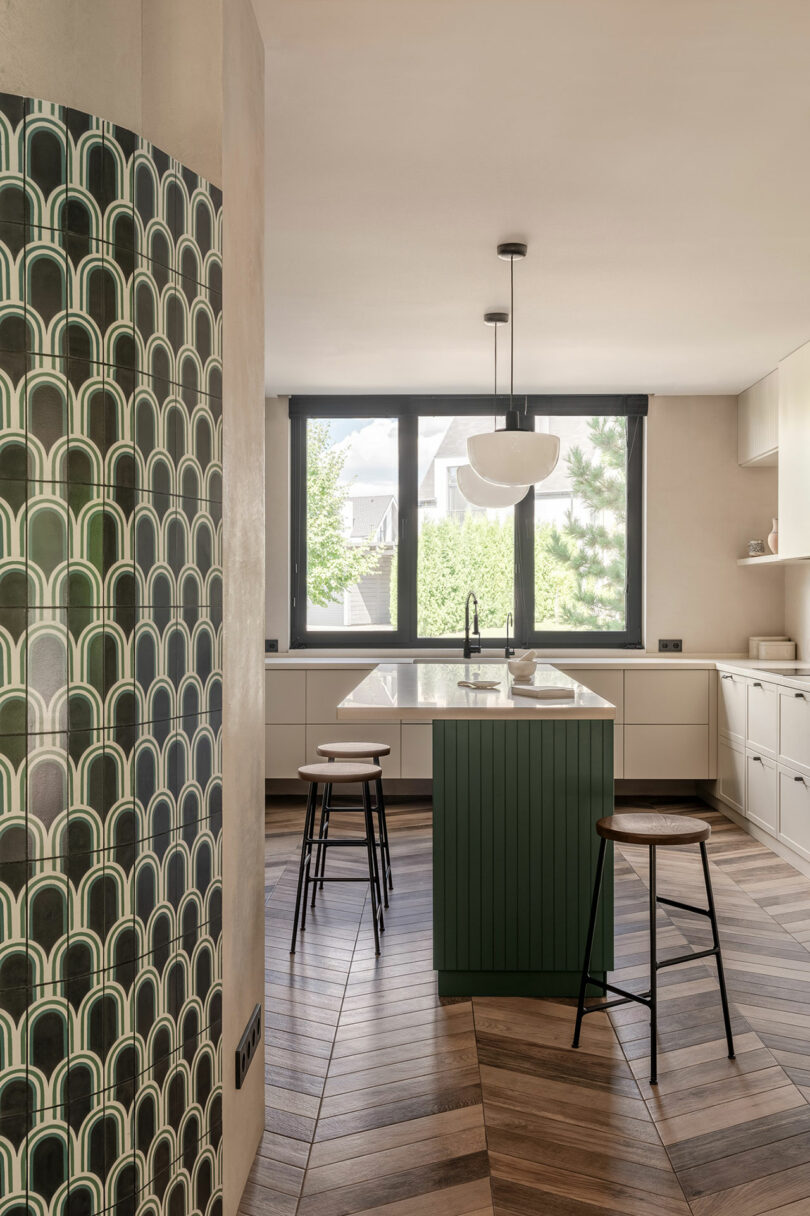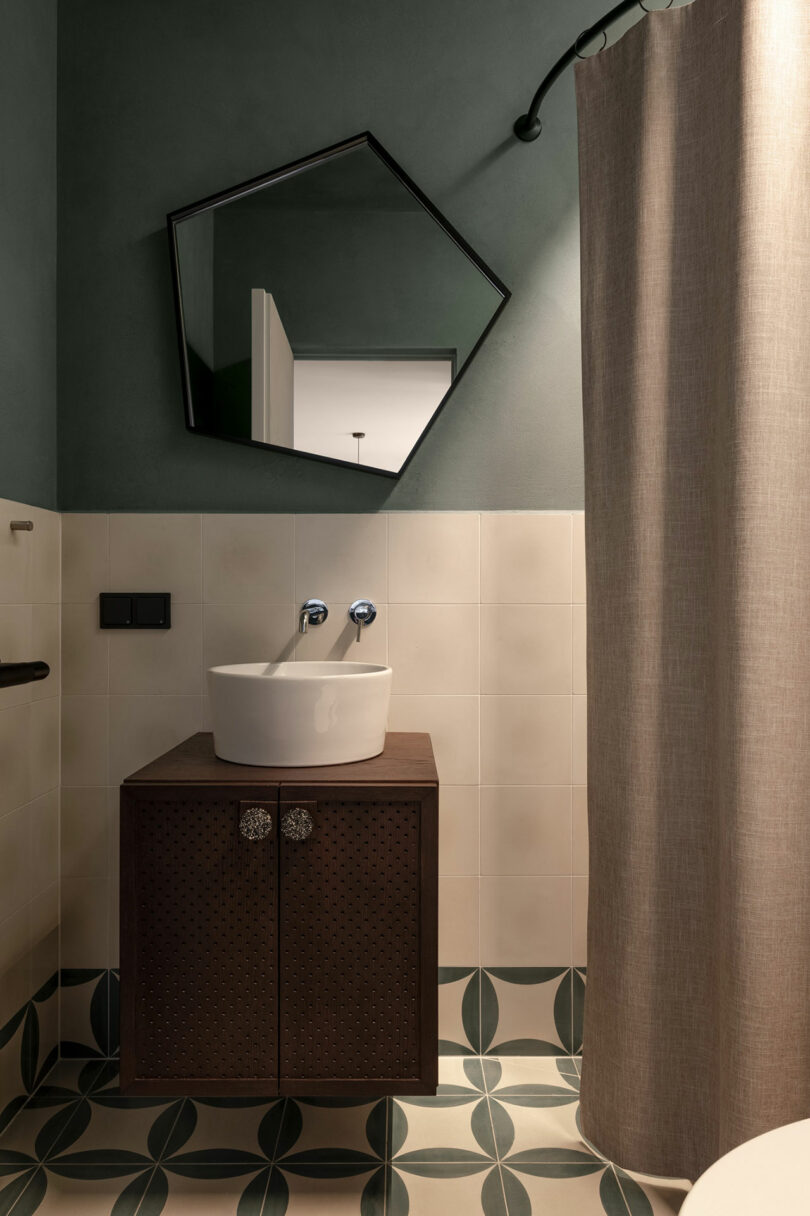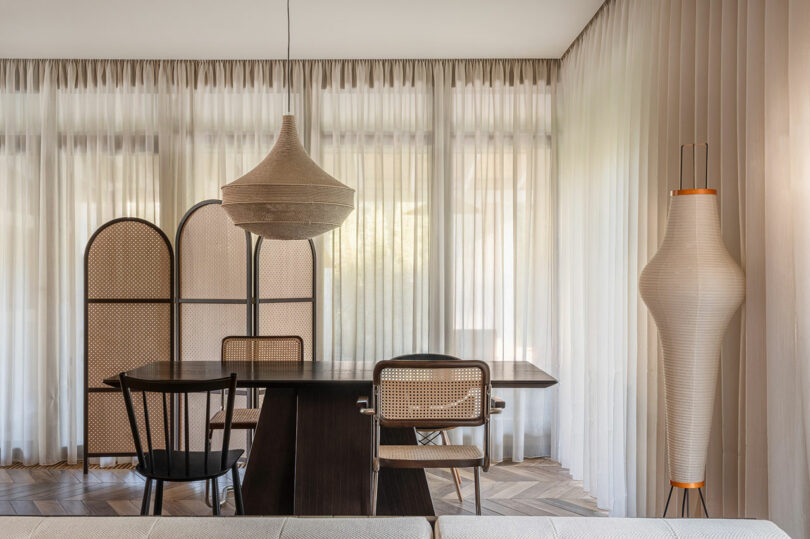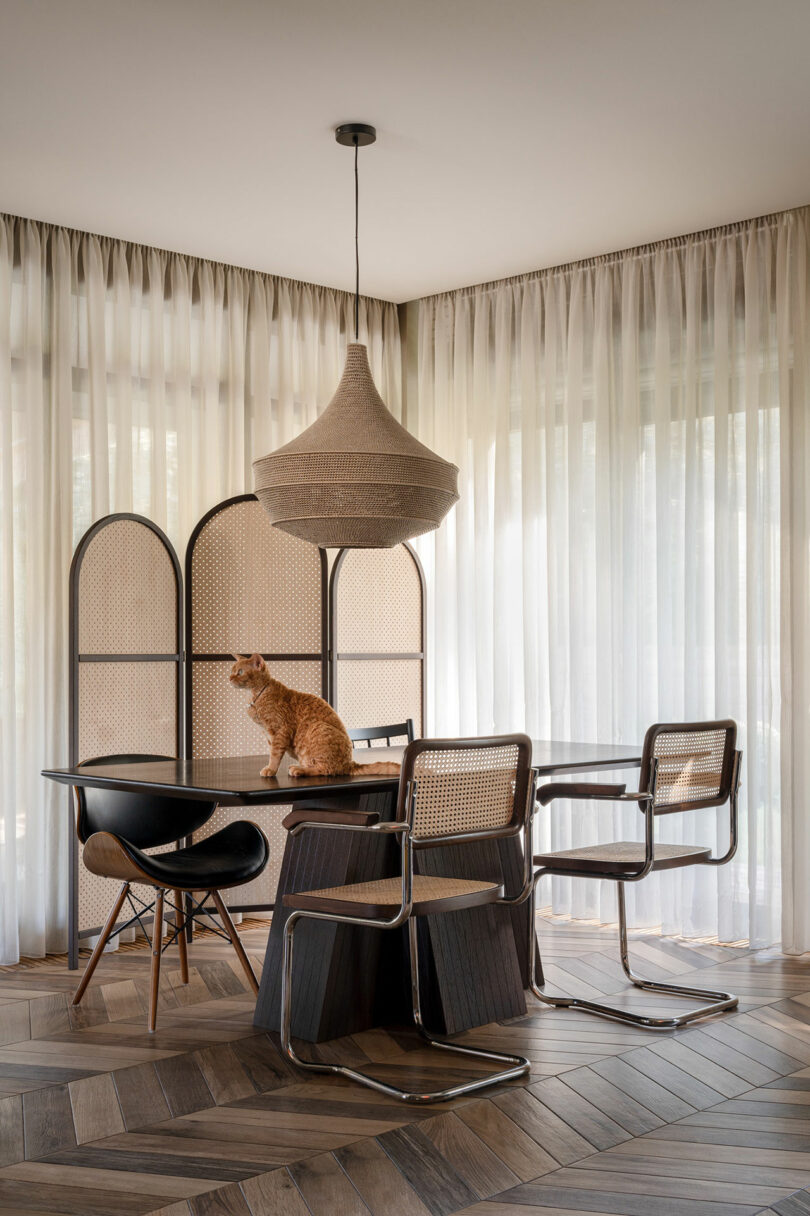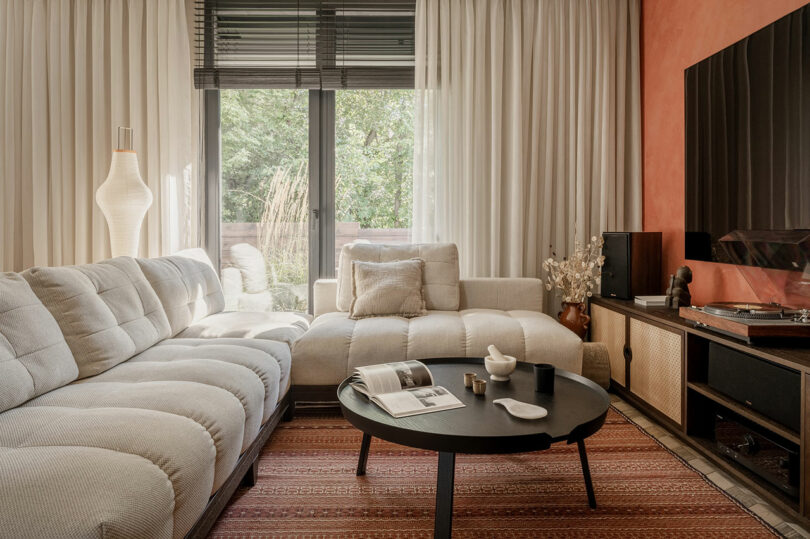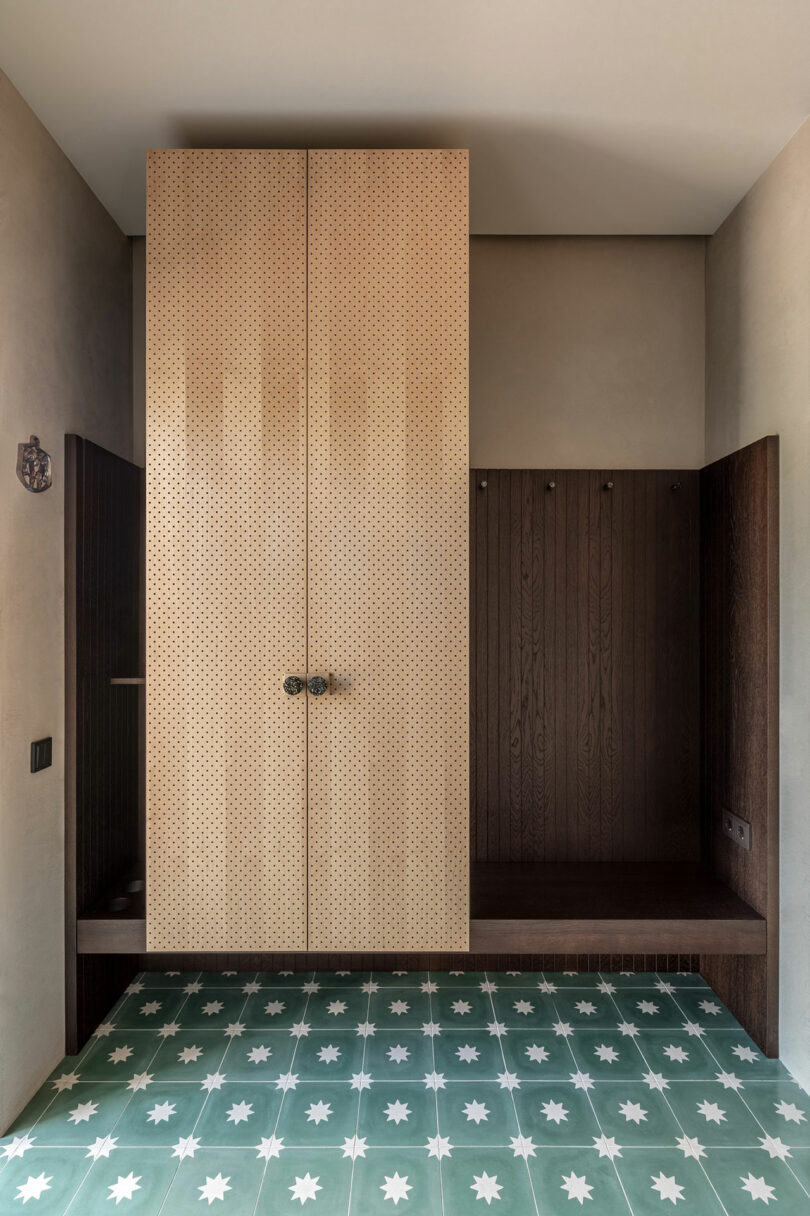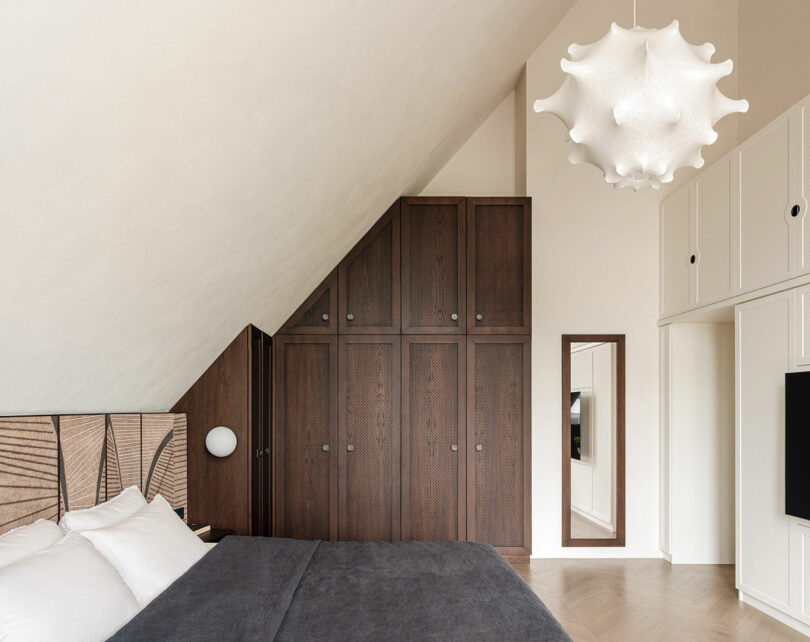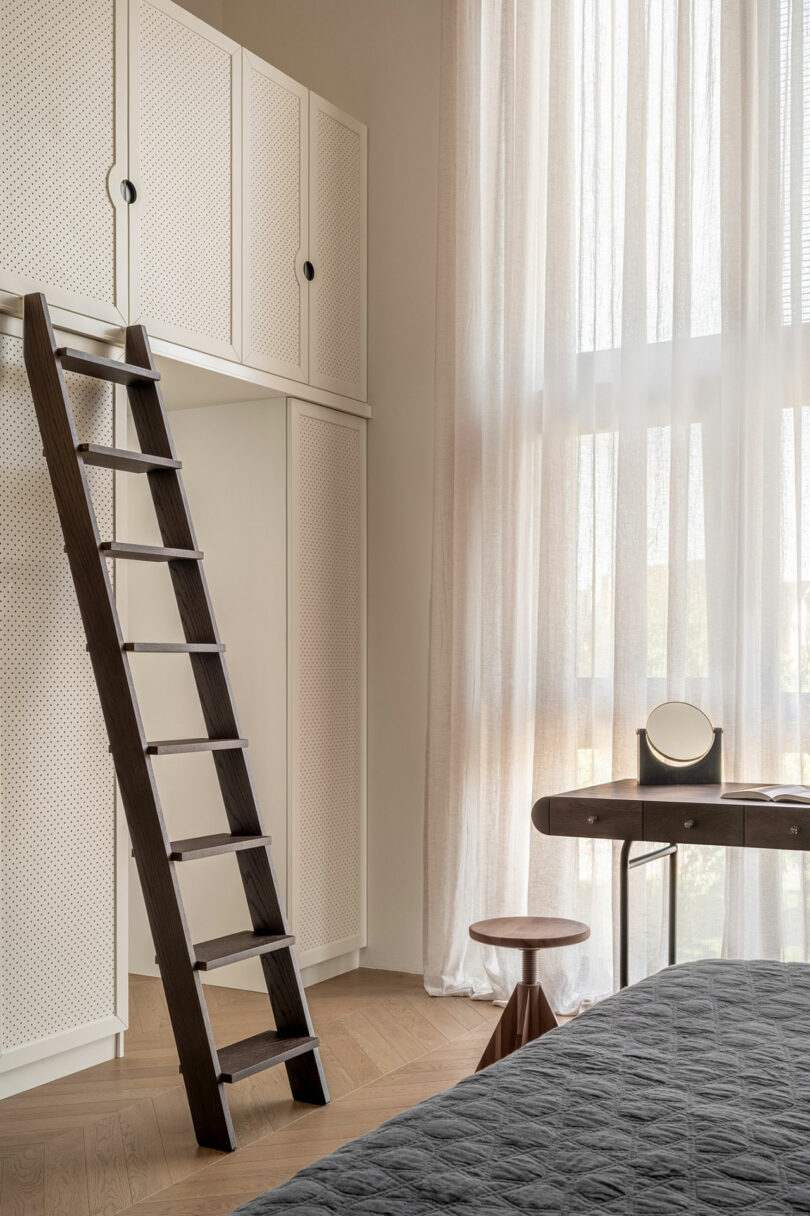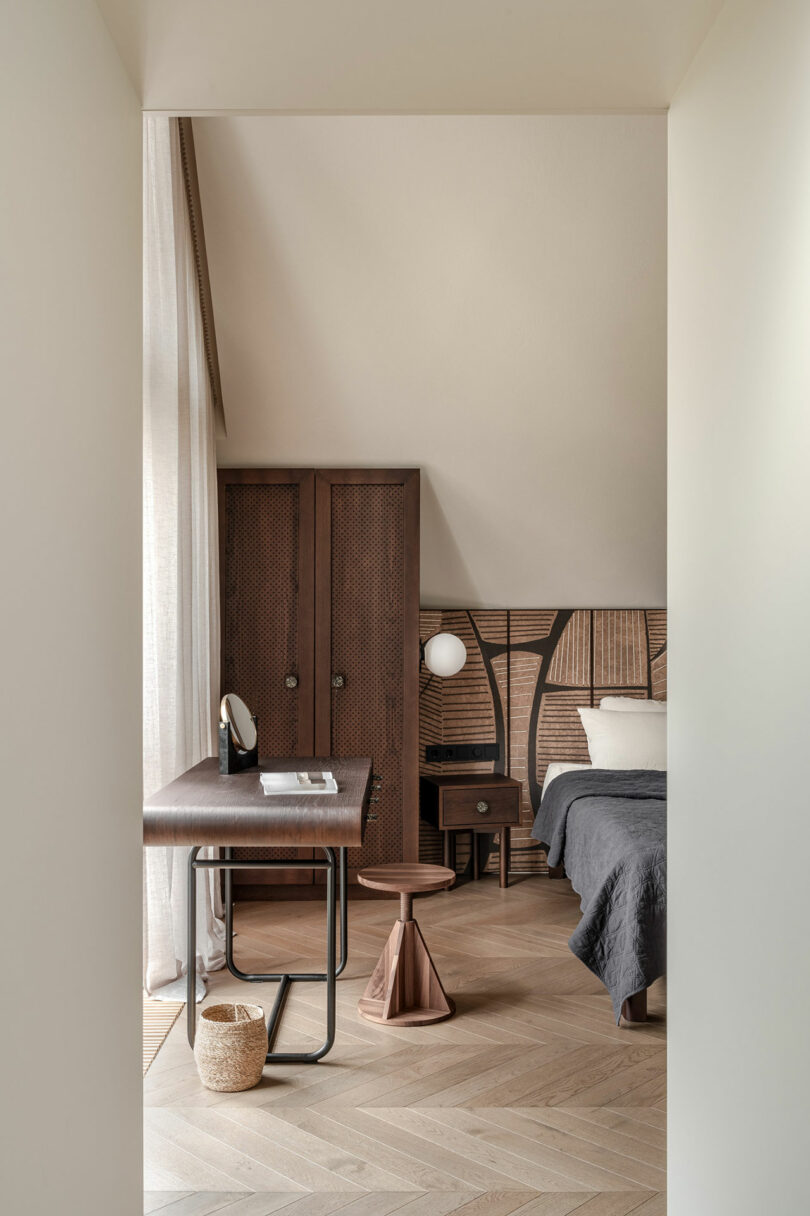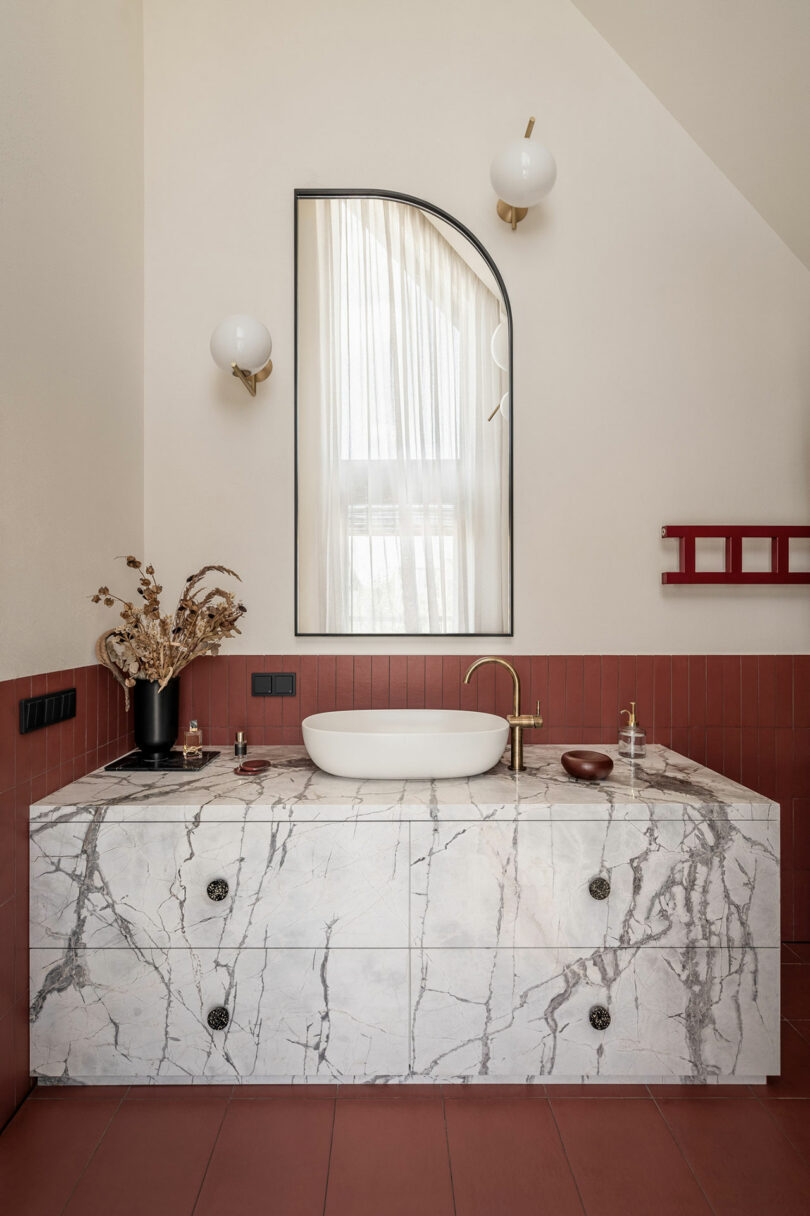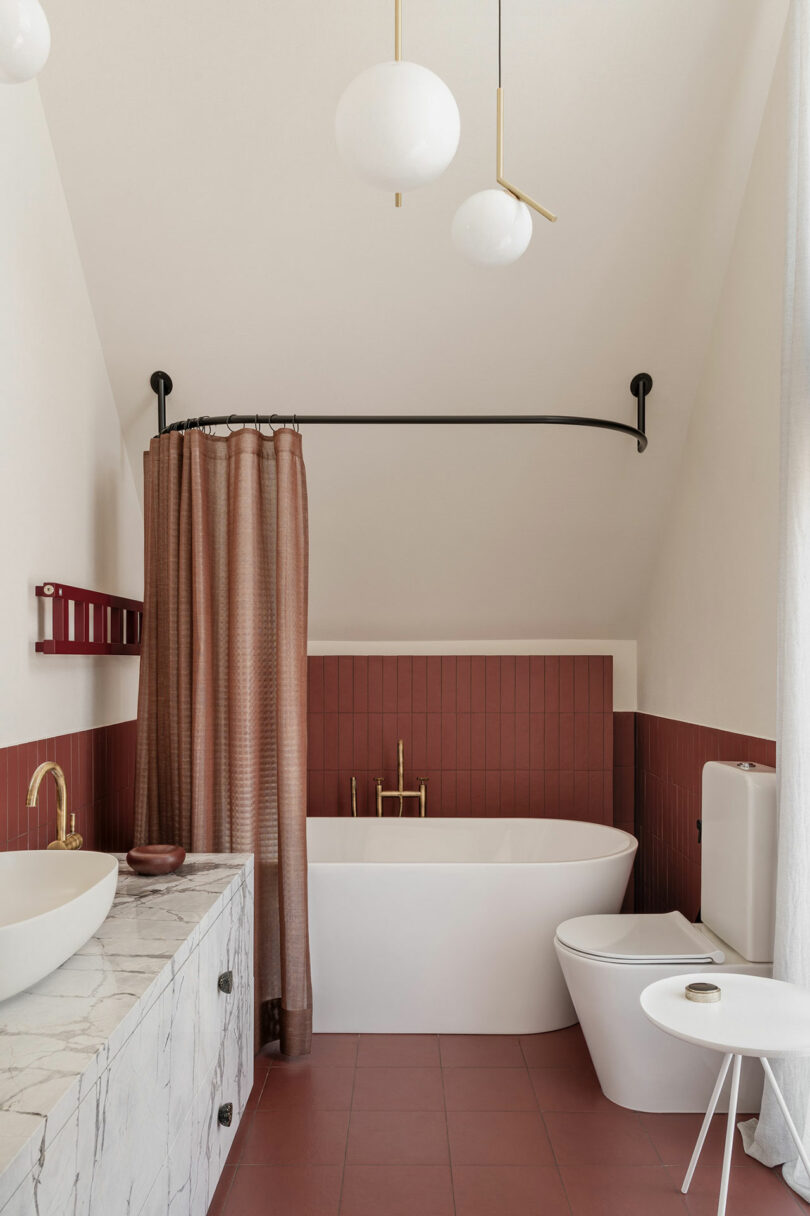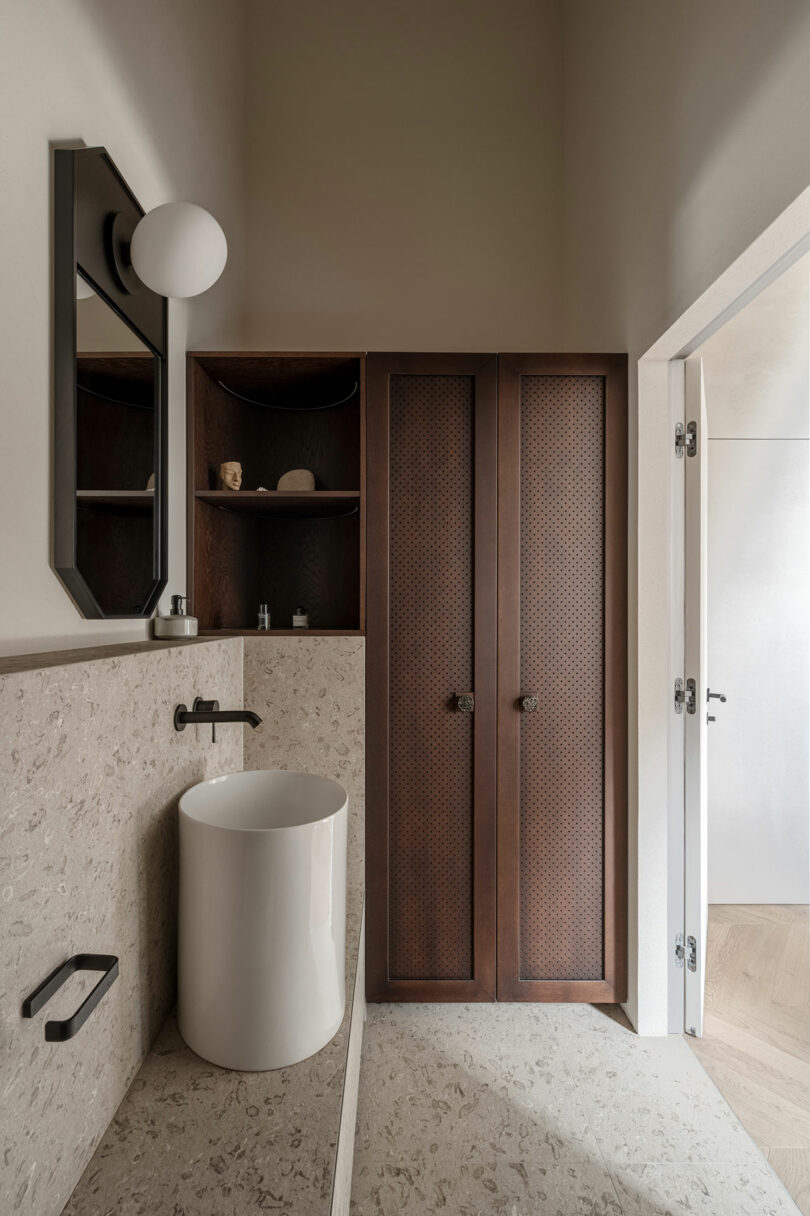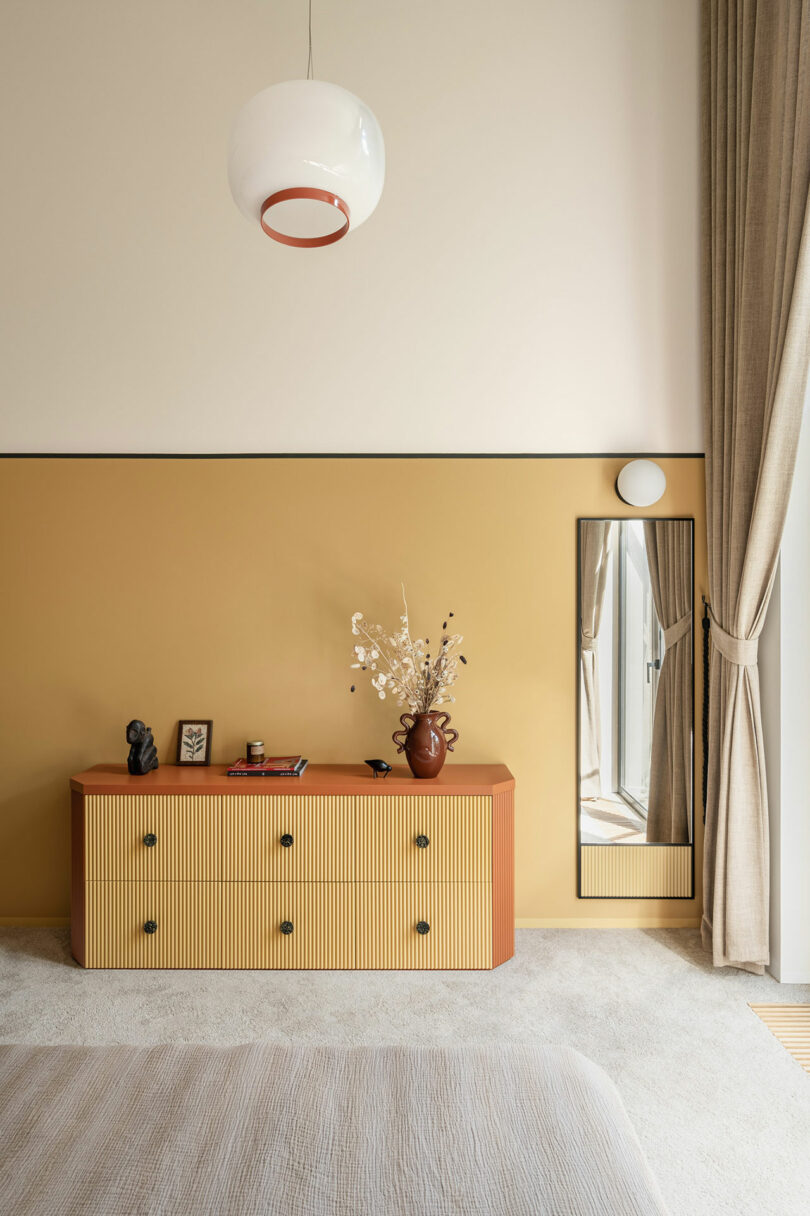Category: Architecture
5 Weekend Trips To Take Without the Kids
[ad_1]
You love your kids; you’d go to the ends of the earth for them. You just don’t have to go to the ends of the earth with them every time you get away. Never underestimate the power of a child-free vacation. Not only will it give you an opportunity to reconnect with the things you enjoy (cocktails! sleeping in! quiet spaces!), it’ll also give you a chance to spend some quality time with your partner—it only takes a few sips of wine to forget all about sippy cups.
And so, we’ve partnered with Hilton to highlight our top five trips without your tots in tow. Go ahead, book that babysitter or ship the kiddos off to Grandma. Then, head on one of these awesome escapes.
The All-About-Wine Weekend
Let’s play a little word association game: bottles. If the first things that come to mind are milk and rubber nipples, it’s time for a wine-country getaway. For bottles filled with reds, whites and rosés, you can venture in just about any direction. On the East Coast, the Finger Lakes region in upstate New York is known for its Riesling and Chardonnay (they also make a mean grape pie in the town of Naples). But if you’re looking for warmer climes later in the year, Santa Barbara, California—noted for its Pinot Noir, Merlot and Sauvignon Blanc—is the place to be. From there, you can take a side trip about 45 minutes north to Solvang, the tiny Danish town made famous by the Oscar-winning movie Sideways. In addition to wine, you’ll find bakeries, windmills and, yes, even shops selling wooden shoes (the hygge here is off the hook). Over in the Lone Star State, which, by the way, is the fifth-largest wine-producing state in the U.S., the Texas Hill Country has wine spots that marry saloon with Syrah and cowboy boots with Cabs. Six Shooter Cellars in Fredericksburg, for example, looks like the set of an old Western and even hosts an annual grape stomp.
The Chicken Nugget-Less Night Away
No offense to chicken nuggets, but it’s time you both had a real meal. Or better yet, fill an entire getaway with them. For a food-focused trip, you can’t go wrong with Chicago. But contrary to popular belief, the Windy City isn’t only about deep-dish pizza and hot dogs (dusted with celery salt and without ketchup, like any local will tell you). Ever since the James Beard Foundation Awards moved to Chicago in 2015, the city has earned major street cred among the foodie elite. While you’re there, check out Topolobampo, which serves up fine-dining Mexican and took home the top honor of Outstanding Restaurant at the James Beard Awards earlier this year. Other most-talked-about eateries in town include Parachute (Korean-American on the North Side), and GT Prime (the not-your-father’s steakhouse in River North).
Is there any greater symbol of freedom than taking to the open road? Grab your partner, ditch the car seats, and curate the perfect playlist. Then, take a road trip that’s entirely about the two of you, right down to the stops you make along the way (yes, you are pulling over for that antiques shop, and no, browsing for mid-century lighting is not boring). Of course, any stretch of Route 66 is iconic, and Highway 1 in California is hard to beat. But if you only have a weekend, consider a drive that’s short but packs a punch with roadside views. Route 6 in Massachusetts is only 118 miles, but it covers some gorgeous ground along Cape Cod. Once you reach Provincetown, be sure to get your fill of oysters and check out the Pilgrim Monument, which commemorates the Mayflower’s landing in 1620. For some Southwestern scenery, stay in Santa Fe, New Mexico, and go for a drive along the High Road to Taos. The trip is around 70 miles each way, and you’ll pass desert, the Sangre de Cristo Mountains, Spanish Colonial architecture and art galleries filled with wood carvings, pottery and rugs.
shapecharge via Getty Images
The City Exploration Escape
It’s hard to reason with an 8-year-old that you’re forgoing Disney World in favor of Pittsburgh. “But the contemporary art scene there is incredible,” you’ll explain to a blank stare dreaming of mouse ears. That’s why certain city trips are better left to the adults, and Pittsburgh is one of them. Free from your brood, you and your partner can check out the Andy Warhol Museum (he was born in the ’Burgh), Mattress Factory (a space founded in 1977 by artists to support fellow artists) and the Carnegie Museum of Art (essentially the first contemporary art museum in the country). Another buzzed-about city is Charleston, South Carolina—it nabbed the title of top U.S. city for the fifth year running in Travel + Leisure’s World’s Best Cities list. While there, take a self-guided tour of the Shepard Fairey murals that are painted in public spaces around town. Also, feast on chicken biscuits smothered in cheddar and sausage gravy at Hominy Grill, then work it off by bicycling across the Ravenel Bridge.
The We’re-Not-Even-Leaving-the-Hotel-Room Retreat
Ask any parent, especially new moms and dads, what they’re craving, and they’ll likely tell you they just want time to themselves. That’s why this trip is all about finding the right hotel and staying put. Slip into matching robes and slippers and draw a bubble bath à deux. While you’re soaking, be sure to take a moment to listen … nope, there’s nobody banging on the door shouting, “Mom! Dad!” Follow up those bubbles with some of the sparkling-wine variety and order room service … for dinner and breakfast the next morning, too. If you must leave your room, the spa is a pretty good reason to venture out. Bonus: You won’t even have to change out of your robe. If you’ve picked the right place, such as Boulders Resort & Spa in Scottsdale, Arizona, you can spend any breaks from your room bouncing between meditation hammocks, steam rooms and a heated swimming pool. At the Boulders spa, which contains 33,000 square feet of relaxation space, there’s even a private suite for couples with a fireplace, indoor and outdoor showers, and a Jacuzzi. Now that’s a room we wouldn’t want to leave.
Ready to plan the ultimate kid-free weekend? Start with a stress-free hotel. Hilton has you covered. Travel easier this weekend with the Hilton Honors app. Check in, choose your room, and unlock your hotel-room door—all in one place. Extend your weekend and take advantage of Hilton’s Long Weekender package, where you’ll save 50 percent on Sunday nights. Hilton makes it easy to turn your weekend into the ultimate vacation.
[ad_2]
Source link
1 Undershaft, the tallest skyscraper in the City of London, revealed | Architecture
[ad_1]
“I wanted to do something calm,” says the architect Eric Parry, who on Monday unveiled his plan for what will be the tallest building in the City of London, which will rise 309.6m in the heart of the city’s financial district, squeezed between the Cheesegrater and the Gherkin. “It is the last piece in the jigsaw,” he says of his addition to this great dinner party in the sky, “so I wanted to do something that isn’t flamboyant.”
After a decade of outlandish proposals for the City, Parry has come up with a refreshingly blunt stick of a building for the centrepiece of the district’s “cluster” of office blocks. It takes a square footprint and shoots it up 73 storeys, trussing the slender shaft up with gigantic red cross-gartered bracing. Between these will run horizontal lines of white louvres, so that when you look up from the street the soaring obelisk will appear as a solid white mass.
Parry’s plans for 1 Undershaft – which will be the same height as the Shard, that being the maximum height allowed – may come as something of a surprise, given that just a few months ago he published a book called Context in which he warned: “An orgy of tall buildings will transform and arguably overwhelm London.” This flood of towers, he added, is swiftly turning the city from one with a skyline dotted with white stone buildings, to one of “green glass envelopes imported from far afield, representing the Faustian pact of national commerce and real estate”.
Today, standing in his office before a model of the design, he says: “I’ve always loved the way Portland stone buildings emerge out of what I see as the City’s deathly disease of greenish-grey glass. Our tower aims to combine the autumnal beauty of rust red with the bright white of spring.”

The matte Cor-Ten steel will absorb light, he says, while the white gloss will glint all the way to the top, using colour-changing paint at the upper levels to cap the tower with a sparkly rainbow headband. With its simple form, exposed structure and whiff of industrial engineering, 1 Undershaft has the air of a no-nonsense skyscraper more commonly found in Chicago or New York, only dressed up in a slightly prissy costume – or with extra English refinement, depending on how you see Parry’s penchant for decorative dressings.
Its silhouette is subtly tapered, he says, so its facades converge at an imaginary focal point 10 times its height – a learned nod to Edwin Lutyens’ Cenotaph memorial in Whitehall, whose planes meet at a projected spot 1,000ft in the air.
Parry won an invited competition a year ago – against David Chipperfield, David Walker and PLP – and has been working flat out ever since, ready to submit a planning application in January 2016. The client hoped to build an even taller tower, but restrictions from the Civil Aviation Authority set a maximum height over the City so planes don’t have to slalom between spires. It was also restrained by the City’s new approach to less exhibitionist silhouettes. Parry’s design was originally meant to be crowned with a pointy hat, like Cleopatra’s Needle or the Washington Monument, but the planners requested “a less demonstrative top. They didn’t want another overt shape.”
The self-styled thinking developer’s architect, Parry doesn’t dwell on the supercharged speculation that is driving London’s steroidal thicket of towers. He’s keen to talk about his work opening up the City’s 14th-century Charterhouse in Smithfield, a former Carthusian monastery that’s still home to an almshouse for 40 brothers. He is steeped in the medieval history of the Square Mile, which gives encouragement that his tower might be wrought with sensitivity to its context – as much as a 90,000sq m office silo can.

Like the neighbouring Cheesegrater by Rogers Stirk Harbour + Partners, his tower will be jacked up in the air so it has a 10m-high open space at ground level. This will restore a visual connection between its diminutive neighbours, the 12th-century St Helen’s Bishopsgate and the 16th-century St Andrew Undershaft churches, which cling on like stone crumbs at the base of these glass cliffs. Still, they’ve always been loomed over. Undershaft is so-named because it stood in the shadow of a great maypole in medieval times, until the shaft was seized by an angry mob in 1547 and destroyed as a pagan idol. Little can they have imagined that an even mightier shaft would one day return on the same spot.
“The thing that’s most interesting in all this is urban design,” says Parry, deflecting the discussion away from the fact that he is penning the City’s tallest totem. He’s more concerned with fixing the human experience at street level: “The project is really all about public space.”
He has shifted the tower’s core to the west, forming a protruding “bustle” of lift shafts that run two-thirds of the way up the building. This opens up a 150m-long stretch at ground level, so the gothic arches of St Helen’s church can converse with the exposed metallic intestines of Lord Rogers’ Lloyds building to the south.
In the middle of this space, in front of his tower, Parry proposes a sunken plaza, lined with cafes and shops, to create “a convivial space for meeting”, like the excavated piazza in front of New York’s Rockefeller Center. It too could play host to a market or skating rink. “It is in the heart of the insurance district,” he adds, “which is all about loitering. It’s slightly conspiratorial.”
The public will also have to descend into this brokers’ den to reach the top of the tower where, above the obligatory swanky restaurant, will be a two-storey viewing gallery, promised to be open to all for free. Compared to the Walkie-Talkie’s corporate “sky garden” or the Shard’s £25 viewing deck, it could actually be a real public attraction. A looping ramp will take visitors on a 360-degree journey, circling what Parry describes as an “inverted diorama” that explains the history of the city, likely to be developed with the Museum of London.

These are the first images to be revealed, launching the public consultation this week. The project has been shrouded in secrecy since the site was acquired for £288m in 2011 by Singaporean magnate Kuok Khoon Hong and Chinese-Indonesian businessman Martua Sitorus, the billionaire founders of the world’s largest palm oil producer Wilmar International.
Their business was named the world’s least environmentally friendly company by Newsweek in 2012, while a Friends of the Earth report last year detailed a catalogue of landgrabs, deforestation and human rights abuses – all claims the company has denied. The 1 Undershaft proposals have been commissioned by Singapore-based Aroland Holdings, whose major shareholders (including Khoon Hong and Sitorus) are currently building the tallest tower in Indonesia, along with high-rises in Singapore, Beijing and Chengdu.
“It’s interesting being at this point in the chess game,” says Parry. “At the higher level of buildings, this is really the endgame. I don’t think there’s more coming on this scale.”
Ironically, a building of almost the same height, and about twice its width, is arriving next door: 22 Bishopsgate, now under construction on the site of the ill-fated Pinnacle, will stand as a monumental tombstone, congealing the City cluster together into a single solid lump.
[ad_2]
Source link
Modernity Finds Shelter Within Tadao Ando’s The Shinmonzen
[ad_1]
Kyoto is not lacking for serene inns within the city’s historical neighborhoods, in sum emphasizing the city’s eminence as a crafts, arts, and design capital. Walking around Kyoto’s historic Shinmonzen Street in the Gion arts district, it’s easy to believe time passes with a more leisurely gait here along the area’s beautifully preserved buildings. The Shinmonzen distinguishes itself from the numerous traditionally designed machiya townhouses and ryokan inns lining the gentle flow of the Shirakawa River. Not openly so, as the hotel’s front facing architecture of dark latticed timber and kawara tile roofline presents a distinguished weathered simplicity. But inside is harbored the architectural imprint of architect Tadao Ando and interior designer Rémi Tessier, sure to delight the design-minded in its contrast.
A black noren curtain adorned with a calligraphic white ‘S’ on the right side The Shinmonzen’s entrance welcomes guests into what at first seems like an old traditional Japanese ryokan.
The luxury boutique hotel takes its name from ‘Shinmonzen-dori,’ or The Street of the Artists, Fine Arts and Antique shops, situated in a picturesque section of Gion Shirakawa and Shinmonzen Street where weeping willows and cherry trees draw sakura aficionados every spring to admire the blooms against the backdrop of traditional narrow fronted merchant houses.
Despite its aged outer appearance, The Shinmonzen is a contemporary creation inside and out. The passion project of Paddy McKillen, the Irish hotelier was able to convince Ando to reintepret the ryokan, or traditional Japanese inn, into a harmonious balance between yesterday and today, Japanese and European, austerity and comfort. Thus, Ando’s exterior blends into the surrounding architectural landscape with convincing detail, with its contemporary nature only revealed on closer inspection, and more visibly noticeable upon entry.
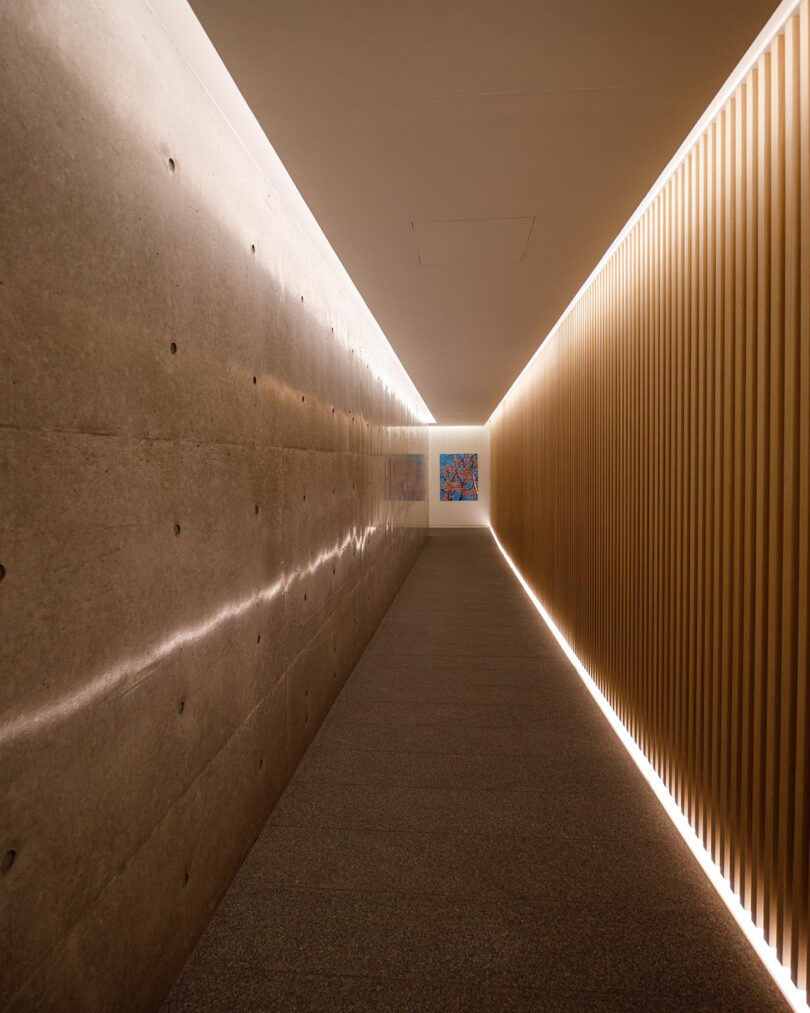
A rotating collection of contemporary artworks are displayed with dramatic placement within corridors and also embellishing guest rooms, reflecting The Shinmonzen’s owner “Paddy-san’s” love of contemporary and architecture.
The hotel’s nine suites are each unique, each accented by a different material endemic to Japan, and furnished with an amalgamation of items sourced from the local vernacular paired with contemporary European designs.
Tatami floors underfoot and capacious cypress soaking tubs reference traditional Japanese interiors, contrasted by spans of marble counters and handwoven carpets of European styling.
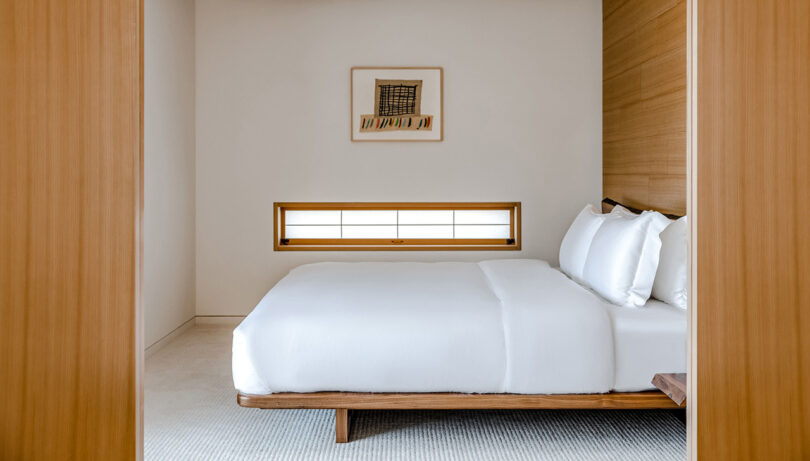
Tranquility is further enhanced by the integration of “toko-no-ma” – literally “empty space,” a defining architectural trait of traditional Japanese sitting rooms.
Rooms range in size from the 430-square-foot WASHI suite with king-sized bed to the 860-square-foot KINU furnished with side-by-side twin size futons, marble double vanity bathroom, and an enormous walk-in closet.
A serene simplicity runs through each of the suite’s organically expressed interiors, all quietly occupied by Toan Nguyen’s curving armchairs and softened by Japanese textile maker Kawashima Selkon’s hand-woven carpets.
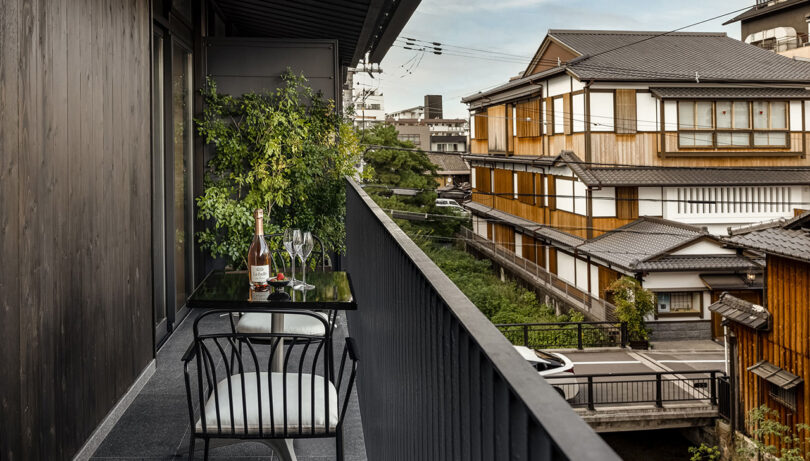
Balconies overlooking the Shirakawa River afford guests an intimate, yet semi-private place of their own to take in the sights and sounds of Gionʼs buzzing alleys and cobbled streets.
French, American, and Asian farm-to-table dining is served daily within the hotel’s restaurant, Jean Georges at the Shinmonzen, including a Japanese-style breakfast punctuated by Kyoto-sourced heirloom vegetables, a vegetarian menu, alongside an omnivore’s delightful 8-course meal.
“During our design process, the goal was to create a space that accommodates the desires of the modern traveler while respecting the tradition and legacy of Kyoto,” says Tadao Ando. “This hotel represents a nuanced fusion of the past, the present, and the future. I believe that it will embody the essence of Kyoto while still appealing to cosmopolitan sensibilities. I hope that everyone who visits will discover the new charm of an age-old city.”
What: The Shinmonzen
Where: 235 Nishino-cho, Shinmonzen-dori, Higashiyama-ku, Kyoto 605 0088
How much: Starting from US $1,916/night
Highlights: Tadao Ando’s light hand allows the architecture to quietly complement what the architect describes as “the most beautiful body of water in all of Kyoto.” And with each room assigned its own private balcony, guests are welcome to watch the flow of water and foot traffic in equal comfort.
Design draw: The Shinmonzen’s art collection includes ceramic vessels by Takayuki Watanabe, contemporary artworks by the likes of Damian Hirst, Gerhard Richter, and Louise Bourgeois, with rooms curated by interior designer Rémi Tessier. A 19-minute walk will take you to the Kyoto Museum of Crafts and Design, KYOCERA Museum of Art, and the The National Museum of Modern Art.
Book it: The Shinmonzen
Go virtually on vacation with more design destinations right here.
[ad_2]
Source link
Princeton Confronts Its Slave-Owning Past With An ‘Anti-Monument’
[ad_1]
For over a century and a half, Princeton University neither acknowledged nor investigated its historical ties to slavery, despite the fact that the first nine presidents of the school owned slaves at some point in their lives.
This month, that changes. Students, faculty and anyone else walking past Princeton’s Maclean House will lock eyes with an object ― a sculptural relief, to be exact ― depicting the face of Samuel Finley, the fifth president of Princeton, along with the faces of the man, woman and child he possessed as slaves.
The work is part of the Princeton & Slavery Project, an initiative launched by history professor Martha A. Sandweiss in 2012. The ongoing research project focuses on the slave-holding practices of Princeton’s founding trustees and faculty members, taking into account how the university (and New Jersey at large) profited from and grew out of slave labor, a practice that was not abolished in the state until 1865.
“I was ignorant. I was curious,” Sandweiss told HuffPost of her desire to dive into Princeton’s ties to slavery. “Since Princeton was founded in 1746, I knew there would be a story. Every institution was implicated, but nobody had investigated it.”
Sandweiss, previously a museum curator and director, launched an undergraduate research seminar on the subject of slavery at Princeton in 2012, examining how the university’s paradoxical embrace of liberty and servitude echoed the contradictions that have always marred early American values.
Over the next few years, students and faculty collaborated to piece together a dark history of the school their predecessors had failed to reckon with. The initiative has uncovered stories of women like Betsey Stockton, a former slave of former university President Ashbel Green who went on to become a prominent educator, and Moses Tyler Pyne, who was one of Princeton’s most generous benefactors and whose family owned a sugar trade business reliant on the slave economy.
Oliver Morris via Getty Images
Thanks to her experience in the art world, Sandweiss realized early on that when strict historical inquiry fell short of producing a full story, her team could turn, at times, to other forms of creative expression to fill in the blanks. History is tethered to documents and dates, but art, she felt, offers space to imagine, extract and interpret.
“I really understand what the boundaries of history are,” Sandweiss said. “I live and die by footnotes. That means that I can’t imagine what’s inside people’s heads unless they left me a record. I can’t invent dialogue unless people left their own words for me to find. I thought it would be interesting to work with creative artists that aren’t bound by the same rules that I am.”
Sandweiss relied on these contemporary artists to communicate the pain, mystery and loss that facts could signal but never quite explain. And in 2017, a Princeton selection committee ― co-chaired by Princeton University Art Museum’s director, James Christen Steward, and University Architect Ron McCoy, and made up of members of the Campus Art Steering Committee and other stakeholders ― invited a range of artists to submit proposals for a work that would incorporate the Princeton & Slavery Project’s findings.
Artist Titus Kaphar was selected from the invited applicants, his artistic practice falling eerily in line with Princeton’s vision. Kaphar’s “Impressions of Liberty” was installed on Princeton’s campus in mid-November. “Kaphar’s work does something that academic history can’t,” Sandweiss said. “It just brings history alive in a different way.”
Although the Michigan-born artist, who’s painted activists in Ferguson, Missouri, and composite mugshots of women named Destiny, wasn’t previously aware of the university’s experience with slavery, he wasn’t surprised either. “There are very few corners of the country that weren’t in some way impacted by slavery,” he said. “We like to imagine that the ‘North’s’ hands are totally clean. And that’s not historically accurate.”
“There are very few corners of the country that weren’t in some way impacted by slavery.”
- Titus Kaphar
Finley, a former Princeton president, owned slaves until he died in 1766. After his death, Finley’s possessions were auctioned off on the university’s campus, including furniture, books, grain, farming utensils ― and two women, a man and three children. One of the documents Sandweiss and her team unearthed was an advertisement in the Pennsylvania Journal published July 31, 1766, announcing the sale of Finley’s estate. It describes the man, women and children to be sold: “The Negro Women understand all Kinds of House Work, and the Negro Man is well fitted for the Business of Farming in all its Branches.”
This brief announcement is the only surviving description of the individuals Finley enslaved. The auction itself took place on a spot on campus near the President’s House, also known as Maclean, marked by two Sycamore trees ― dubbed “liberty trees” ― which were reportedly planted in 1766 to honor the repeal of the Stamp Act. The fact that people were sold on land adorned with “liberty trees” was not lost on Kaphar.
His sculpture, positioned in front of the President’s House, is a continuation of Kaphar’s “Monumental Inversions” series, which the artist describes as “an investigation into the American tradition of monument making.” The exploration is certainly timely; this year, monuments across the nation are being called into question for being offensive or inconsistent with American values today. Bronze tributes to Confederate General Robert E. Lee, which haunted black Virginians decades after the Civil War, and a statue of Dr. James Marion Sims, a New York doctor who experimented on enslaved black women in the mid- to late-1800s, are among the contested figures.
Sandweiss understands Kaphar’s sculpture as a monument, in that it commemorates a person, place or event. However, Steward, the director of the university’s art museum, sees the piece as more of an “anti-monument.”
“Monuments often purport to speak timelessly and to engage in a fixed notion of history,” he said via email. “Monuments are often erected to memorialize fallen heroes or otherwise reinforce a particular idea of the past. In that light, I think Titus Kaphar’s work is more ‘anti-monument,’ drawing our attention to forgotten histories and to the idea that history itself is being constantly rewritten. It is that understanding of history as fluid (and as a tale of both who is depicted and who is omitted) that indeed drew us to his work.”
Another difference: while most monuments are fixed permanently, Kaphar’s will only be on view until Dec. 17. Steward believes that by not aspiring to permanence, the work “can heighten our sensitivity to a past that can never be fixed in time or place.”
Whether or not Kaphar’s work should be categorized as a monument, it certainly illuminates the strange role monuments play in our culture, their ability to reach back into history and reshape it. “There is something slightly propagandistic about monuments and the way they play with timelines,” said Alva Noë, a philosophy professor at University of California, Berkeley. “They have the ability to shift time.”
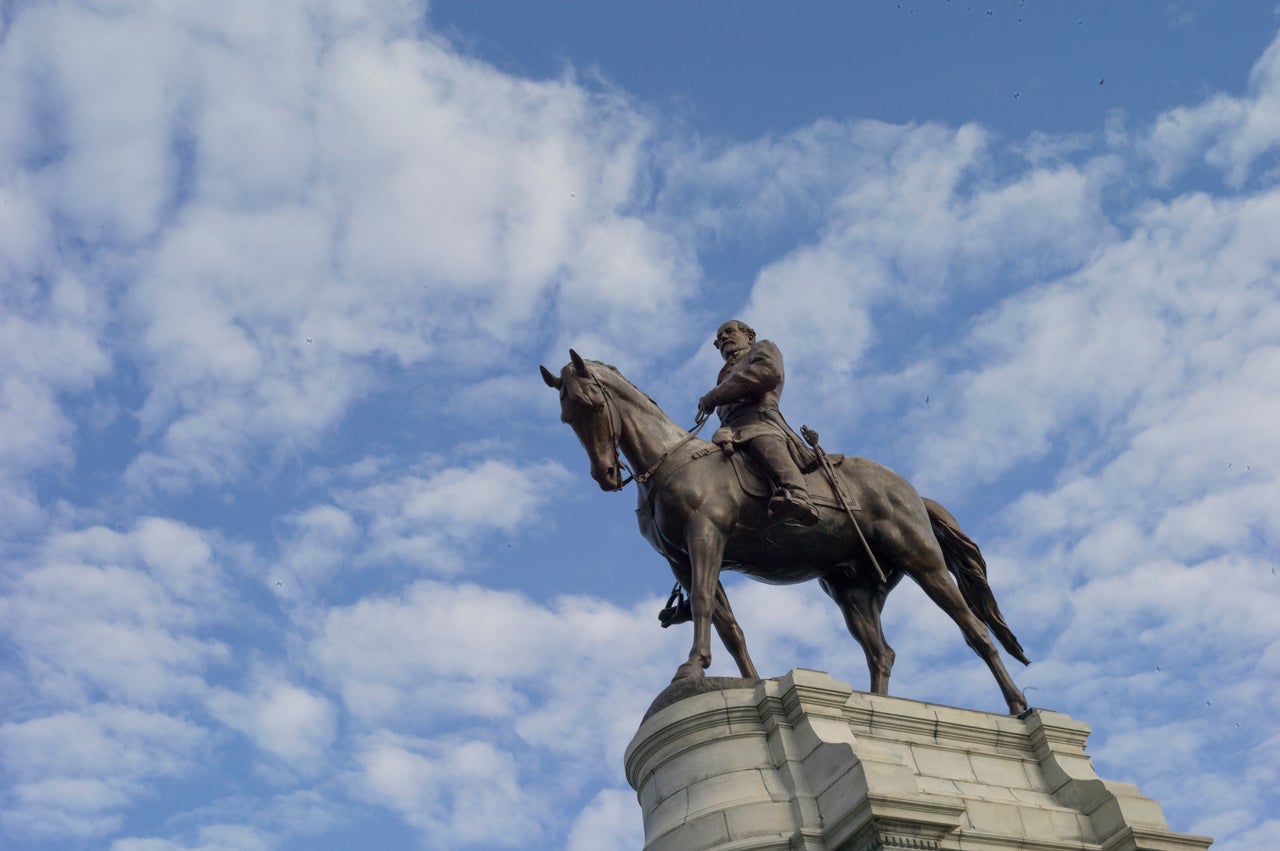
Andrew Lichtenstein via Getty Images
Noë recalled discussing the Robert E. Lee memorial in Charlottesville, Virginia, with a woman he met in the Netherlands. She believed removing the statue would be erasing a crucial trace of the Civil War. “But that monument wasn’t built until 60 years after the Civil War,” Noë said. Such statues were built in the era of Jim Crow laws as “explicit symbols of white supremacy,” though this context has faded out of public knowledge.
Monuments often suggest that history is as clear and unchanging as their bronze bodies. Their imposing and authoritative presence consecrates them as emblems of power and shapers of our collective historical memory. Kaphar, in his early 40s, offers an alternate model that he contends better represents history’s fluidity, complexity, thorniness and ambiguity. A figure that doesn’t lionize or condemn, but represents, and in doing so, promises to remember. It is temporary and in flux, dependent on the viewer’s perspective.
Typically, monuments take up physical space, echoing the way historical figures take up space in our historical memory. Kaphar’s “Impressions,” however, is a relief within a relief within a relief, a series of carvings that recede into nothingness like a cave or a gasp. The sculpture’s emphasis on negative space recalls not so subtly the glaring absences in our nation’s shared story that Kaphar has long been interested in.
If history has a body, Kaphar has long been digging it up and ripping it open, exposing what’s been swallowed, hidden or purposefully forgotten. His art historical interventions before “Impressions” examine American and European traditions between 1700 and 1900, highlighting what ― and who ― is deemed worthy of being immortalized through paint. As if orchestrating corrective surgeries, Kaphar shreds, carves, peels and paints over portraits to illuminate and address the latent discrimination embedded in our visual language.
“I taught myself how to paint by going to museums and looking at images like this,” Kaphar said in a recent TED talk, referencing a painting by Frans Hals. The image features five people standing before a tree, one of whom is black.
“There is more written about dogs in art history than there is about this other character right here,” the artist said, pointing to the black figure. “I can find out more about the lace that the woman is wearing in this painting, about the manufacturer of the lace, than about this character right here. About his dreams, about his hopes, what he wanted out of life.”
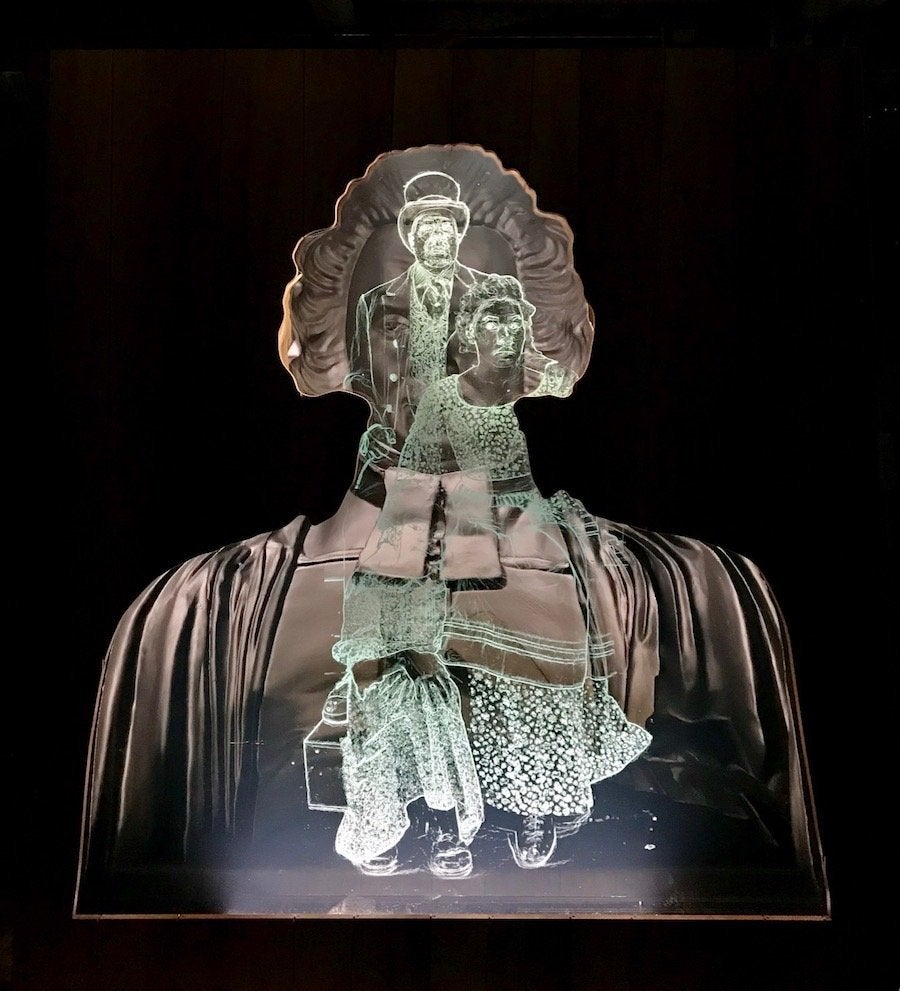
With his Princeton sculpture, Kaphar similarly teases out the relationship between what is visible and unseen. Finley’s bust is carved out of a sheet of sycamore wood, the same type of wood as the “liberty trees” that surround it. The material, Kaphar expresses in his artist statement, “appears more akin to skin than grain.”
Finley’s silhouette, with its powdered wig and regal posture, resembles so many of the white men whose portraits reside in gilded frames. Yet, unlike other art historical subjects, Finley’s insides are carved out. In that sunken place inside his edges reside a man, woman and child who Finley owned as slaves. Little is known about their lives, a fact that, Kaphar wrote to HuffPost, “did not surprise me.”
Their bodies, etched in white, glow each evening when the sun sets and shift ever so slightly as viewers shift their gazes. The sculpture greets passersby on eye level; their reflections materialize from various vantage points. The figures remain, however, inescapably fixed to Finley’s encroaching self.
Monuments are typically, as Noë and Steward reiterated, physically imposing, structurally inviolable and ideologically accessible. They cement a human being into history, ensuring that this singular vision of the past is the one carried forward into the future.
Kaphar’s “Impressions of Liberty” proposes a different way to summon the past into the present without solidifying a singular perspective from which to view it. His piece leaves space for contradictions, ambiguity, ugliness and unknowns, providing the viewer the responsibility to read the image, sit with it, let it make its impression. Finley’s bust is neither didactic nor fixed, instead it gently beckons passersby to come closer, ask questions and take a second look. The past isn’t always as it seems.
American history is not all worth glorifying, but it is worth staring in the face. We might not need another hero. We might not need another monument. But we should look and listen to the stories we have buried. In their representations, we just might see ourselves.
Titus Kaphar’s “Impressions of Liberty” is on view until Dec. 17, 2017, at Princeton’s Maclean House.
[ad_2]
Source link
Is RIBA a racist, sexist old boys’ club? | Architecture
[ad_1]
The Royal Institute of British Architects. The name alone conjures bespectacled bow-tie wearing old men sitting around in their palatial Portland Place club, congratulating each other on their latest concrete carbuncles. Allegations that it is a racist, sexist old boys’ club – as a thwarted candidate for a council position, Elsie Owusu, claimed last week – came as little surprise. Of course it is. It’s the RIBA. Its headquarters couldn’t look more like a Masonic temple if they tried.
Except that the cliche doesn’t quite match the reality of what lies behind those big bronze doors. The Institute has a woman president, and has had three women in the role almost consecutively – one of whom painted the president’s office in eye-searing cerise. It has an openly gay chief executive. It runs diversity mentoring schemes, equality and inclusion programmes and a Role Models project which, says its initiator Jo Bostock, “intends to challenge stereotypes about who architects are, the background they come from and the work they do.” If you went through the RIBA’s equality, diversity and inclusion initiatives, you would see that, on paper at least, it’s trying hard.
“I think the RIBA is exemplary in a context where 88% of the construction industry is male,” says architect Holly Porter, who founded Chicks with Bricks in 2005, a network for connecting young women in the industry to their female peers and role models. “I wouldn’t say it was sexist at all, or an old boys’ club. Its track record speaks for itself.”
But that track record, if you follow the sometimes salacious pages of the architectural press, is a big part of the perception problem. Who could forget the time when an RIBA council member referred to Stephen Lawrence Trust candidates as “the ethnics” in an email – then accidentally sent it to the Architects’ Journal? When accused of unacceptable professional conduct, he said: “No evidence at all has been offered to prove that any individual was harmed or that the reputation of the profession was in any way compromised.” He still sits on the RIBA council.

Or how about the time the RIBA president was forced to commission an internal investigation into allegations that its London branch was being manipulated by freemasons? Or when, in a bid to sound enlightened, a presidential candidate once declared at a hustings in front of the Society of Black Architects that he had recently been operated on by a black surgeon – “And, do you know, I didn’t mind.”
Such anecdotes only reinforce Owusu’s claim that racism “goes through architecture like a stick of rock”. A 2012 study found that 94% of UK architects are white, and Owusu says that “it starts at the top with the RIBA.” To many members, the place still has the air of an outmoded organisation clinging on to values from another era.
“Despite the efforts of a valiant number of people,” says architect Deborah Saunt, “it can’t shake off the odour of a gentleman’s club. Enlightened presidents and members have been trying to do a lot, but there’s still that feeling of it being an institutionalised civil service, where certain attitudes won’t go away.” She says many of the younger architects in her office think twice about even joining the RIBA – which charges an annual membership fee of £400 – because they feel it is out of touch.
Owusu says she was shocked by the sexist banter at council meetings, where male members were apparently joking about the current president Jane Duncan being an “Essex girl” – although the RIBA insists it was Duncan herself joking about being an “ethics girl”. One former council member says Owusu’s claims ring all too true: “You wouldn’t believe the kind of comments made at these meetings,” she says. “I experienced casual sexism and old boys’ behaviour all the time.” Others say it’s no different to any other board meeting atmosphere, while some dismiss the claims outright, or say that things have improved.
There have certainly been efforts. Architects for Change was established in 2000 as an umbrella group – bringing together the Women in Architecture campaign, the Society of Black Architects and the Stephen Lawrence Charitable Trust – to challenge and support the RIBA over equal opportunities and diversity. It initiated the mentoring programmes and role models project, and it works hard to alter perceptions of what kind of people architects might be. Presidents Ruth Reed and Angela Brady both championed inclusion during their terms.
“The RIBA has been very supportive of our initiatives,” says the current chair of Architects for Change, Danna Walker, a project manager at the Construction Industry Council. But I wasn’t surprised by Elsie’s allegations. I know a lot of people who have expressed concerns about issues like this in the profession as a whole – there is still a lot more to be done.”
“I can understand why people think the RIBA is a remote thing, not connected to day-to-day practice,” she adds. “The way we all practice has changed, and we need something to reflect that.”
There are signs that things are moving in the right direction. The new president, Jane Duncan, was the RIBA’s equality and diversity champion for two years before being elected, and her whole platform for election was based on these very issues. “We are currently part of an industry that is neither diverse nor fully aware of the extraordinarily sound business reasons for inclusion,” she wrote. “There remains much to do. You have to drive change … I don’t have very much patience and I like to see things happen.” She has launched an independent investigation following Owusu’s allegations and says a report will be compiled and discussed at the next council meeting in March.
But for many RIBA members, they will only believe change when they see it. A good number feel that it is overdue a radical overhaul, needing to catch up with the changing nature of the profession.
“It doesn’t really speak to its membership,” says architect Sarah Wigglesworth. “Probably because it really is a club for establishment architects, which is reflected in the awards system. I don’t think it has fundamentally changed – I think the whole thing keeps reinventing itself in another ghastly way over and over again.”
[ad_2]
Source link
Marc Thorpe Goes 100% Off-Grid in the West Catskill Mountains
[ad_1]
Located near the town of Roscoe in the Western Catskill Mountains of New York, the Fremont House seamlessly integrates into its natural surroundings. Tucked away amidst the trees, it’s the embodiment of responsible living and a testament to the power of sustainable design. Spanning 1,000 square feet, the Fremont House is a 100% off-grid masterpiece designed by architect Marc Thorpe. The minimalist cabin is not your average home – it’s a harmonious blend of nature and technology.
The boxy black house isn’t Thorpe’s first off-the-grid cabin. In 2019, he unveiled The Edifice, a modern cedar cabin that’s about half the size of the Fremont. The newer build offers two bedrooms, one bathroom, a living room, dining space, kitchen, storage, utility room, and a small terrance. The layout allows for the separation of public and private spaces with the bedrooms located on the top floor.
One of the standout features of the Fremont House is its 100% solar power setup. Marc Thorpe’s vision was to create an affordable contemporary home that relies on integrated sustainable technology. In a world where our energy consumption is increasingly unsustainable, this house stands as a shining example of self-reliance and environmental responsibility. As Thorpe says, “The Fremont House is an architecture of responsibility and respect for our environment and ourselves.”
Thorpe believes in taking control of our energy consumption by generating our power sustainably. He’s not just building a house – he’s constructing a better future. This future is defined by quality, not quantity, and it’s about living in harmony with nature. It’s about leaving a legacy for our children and future generations.
Sliding glass doors lead to an open living space that houses a living room with a gray sectional sofa and a simple kitchen with an island serving as the home’s dining area.
A curated selection of furniture and furnishings creates a stylish yet comfortable atmosphere that doesn’t detract from the surrounding forest views.
Photography by Marco Petrini.
[ad_2]
Source link
Princeton Confronts Its Slave-Owning Past With An ‘Anti-Monument’
[ad_1]
For over a century and a half, Princeton University neither acknowledged nor investigated its historical ties to slavery, despite the fact that the first nine presidents of the school owned slaves at some point in their lives.
This month, that changes. Students, faculty and anyone else walking past Princeton’s Maclean House will lock eyes with an object ― a sculptural relief, to be exact ― depicting the face of Samuel Finley, the fifth president of Princeton, along with the faces of the man, woman and child he possessed as slaves.
The work is part of the Princeton & Slavery Project, an initiative launched by history professor Martha A. Sandweiss in 2012. The ongoing research project focuses on the slave-holding practices of Princeton’s founding trustees and faculty members, taking into account how the university (and New Jersey at large) profited from and grew out of slave labor, a practice that was not abolished in the state until 1865.
“I was ignorant. I was curious,” Sandweiss told HuffPost of her desire to dive into Princeton’s ties to slavery. “Since Princeton was founded in 1746, I knew there would be a story. Every institution was implicated, but nobody had investigated it.”
Sandweiss, previously a museum curator and director, launched an undergraduate research seminar on the subject of slavery at Princeton in 2012, examining how the university’s paradoxical embrace of liberty and servitude echoed the contradictions that have always marred early American values.
Over the next few years, students and faculty collaborated to piece together a dark history of the school their predecessors had failed to reckon with. The initiative has uncovered stories of women like Betsey Stockton, a former slave of former university President Ashbel Green who went on to become a prominent educator, and Moses Tyler Pyne, who was one of Princeton’s most generous benefactors and whose family owned a sugar trade business reliant on the slave economy.
Oliver Morris via Getty Images
Thanks to her experience in the art world, Sandweiss realized early on that when strict historical inquiry fell short of producing a full story, her team could turn, at times, to other forms of creative expression to fill in the blanks. History is tethered to documents and dates, but art, she felt, offers space to imagine, extract and interpret.
“I really understand what the boundaries of history are,” Sandweiss said. “I live and die by footnotes. That means that I can’t imagine what’s inside people’s heads unless they left me a record. I can’t invent dialogue unless people left their own words for me to find. I thought it would be interesting to work with creative artists that aren’t bound by the same rules that I am.”
Sandweiss relied on these contemporary artists to communicate the pain, mystery and loss that facts could signal but never quite explain. And in 2017, a Princeton selection committee ― co-chaired by Princeton University Art Museum’s director, James Christen Steward, and University Architect Ron McCoy, and made up of members of the Campus Art Steering Committee and other stakeholders ― invited a range of artists to submit proposals for a work that would incorporate the Princeton & Slavery Project’s findings.
Artist Titus Kaphar was selected from the invited applicants, his artistic practice falling eerily in line with Princeton’s vision. Kaphar’s “Impressions of Liberty” was installed on Princeton’s campus in mid-November. “Kaphar’s work does something that academic history can’t,” Sandweiss said. “It just brings history alive in a different way.”
Although the Michigan-born artist, who’s painted activists in Ferguson, Missouri, and composite mugshots of women named Destiny, wasn’t previously aware of the university’s experience with slavery, he wasn’t surprised either. “There are very few corners of the country that weren’t in some way impacted by slavery,” he said. “We like to imagine that the ‘North’s’ hands are totally clean. And that’s not historically accurate.”
“There are very few corners of the country that weren’t in some way impacted by slavery.”
- Titus Kaphar
Finley, a former Princeton president, owned slaves until he died in 1766. After his death, Finley’s possessions were auctioned off on the university’s campus, including furniture, books, grain, farming utensils ― and two women, a man and three children. One of the documents Sandweiss and her team unearthed was an advertisement in the Pennsylvania Journal published July 31, 1766, announcing the sale of Finley’s estate. It describes the man, women and children to be sold: “The Negro Women understand all Kinds of House Work, and the Negro Man is well fitted for the Business of Farming in all its Branches.”
This brief announcement is the only surviving description of the individuals Finley enslaved. The auction itself took place on a spot on campus near the President’s House, also known as Maclean, marked by two Sycamore trees ― dubbed “liberty trees” ― which were reportedly planted in 1766 to honor the repeal of the Stamp Act. The fact that people were sold on land adorned with “liberty trees” was not lost on Kaphar.
His sculpture, positioned in front of the President’s House, is a continuation of Kaphar’s “Monumental Inversions” series, which the artist describes as “an investigation into the American tradition of monument making.” The exploration is certainly timely; this year, monuments across the nation are being called into question for being offensive or inconsistent with American values today. Bronze tributes to Confederate General Robert E. Lee, which haunted black Virginians decades after the Civil War, and a statue of Dr. James Marion Sims, a New York doctor who experimented on enslaved black women in the mid- to late-1800s, are among the contested figures.
Sandweiss understands Kaphar’s sculpture as a monument, in that it commemorates a person, place or event. However, Steward, the director of the university’s art museum, sees the piece as more of an “anti-monument.”
“Monuments often purport to speak timelessly and to engage in a fixed notion of history,” he said via email. “Monuments are often erected to memorialize fallen heroes or otherwise reinforce a particular idea of the past. In that light, I think Titus Kaphar’s work is more ‘anti-monument,’ drawing our attention to forgotten histories and to the idea that history itself is being constantly rewritten. It is that understanding of history as fluid (and as a tale of both who is depicted and who is omitted) that indeed drew us to his work.”
Another difference: while most monuments are fixed permanently, Kaphar’s will only be on view until Dec. 17. Steward believes that by not aspiring to permanence, the work “can heighten our sensitivity to a past that can never be fixed in time or place.”
Whether or not Kaphar’s work should be categorized as a monument, it certainly illuminates the strange role monuments play in our culture, their ability to reach back into history and reshape it. “There is something slightly propagandistic about monuments and the way they play with timelines,” said Alva Noë, a philosophy professor at University of California, Berkeley. “They have the ability to shift time.”

Andrew Lichtenstein via Getty Images
Noë recalled discussing the Robert E. Lee memorial in Charlottesville, Virginia, with a woman he met in the Netherlands. She believed removing the statue would be erasing a crucial trace of the Civil War. “But that monument wasn’t built until 60 years after the Civil War,” Noë said. Such statues were built in the era of Jim Crow laws as “explicit symbols of white supremacy,” though this context has faded out of public knowledge.
Monuments often suggest that history is as clear and unchanging as their bronze bodies. Their imposing and authoritative presence consecrates them as emblems of power and shapers of our collective historical memory. Kaphar, in his early 40s, offers an alternate model that he contends better represents history’s fluidity, complexity, thorniness and ambiguity. A figure that doesn’t lionize or condemn, but represents, and in doing so, promises to remember. It is temporary and in flux, dependent on the viewer’s perspective.
Typically, monuments take up physical space, echoing the way historical figures take up space in our historical memory. Kaphar’s “Impressions,” however, is a relief within a relief within a relief, a series of carvings that recede into nothingness like a cave or a gasp. The sculpture’s emphasis on negative space recalls not so subtly the glaring absences in our nation’s shared story that Kaphar has long been interested in.
If history has a body, Kaphar has long been digging it up and ripping it open, exposing what’s been swallowed, hidden or purposefully forgotten. His art historical interventions before “Impressions” examine American and European traditions between 1700 and 1900, highlighting what ― and who ― is deemed worthy of being immortalized through paint. As if orchestrating corrective surgeries, Kaphar shreds, carves, peels and paints over portraits to illuminate and address the latent discrimination embedded in our visual language.
“I taught myself how to paint by going to museums and looking at images like this,” Kaphar said in a recent TED talk, referencing a painting by Frans Hals. The image features five people standing before a tree, one of whom is black.
“There is more written about dogs in art history than there is about this other character right here,” the artist said, pointing to the black figure. “I can find out more about the lace that the woman is wearing in this painting, about the manufacturer of the lace, than about this character right here. About his dreams, about his hopes, what he wanted out of life.”

With his Princeton sculpture, Kaphar similarly teases out the relationship between what is visible and unseen. Finley’s bust is carved out of a sheet of sycamore wood, the same type of wood as the “liberty trees” that surround it. The material, Kaphar expresses in his artist statement, “appears more akin to skin than grain.”
Finley’s silhouette, with its powdered wig and regal posture, resembles so many of the white men whose portraits reside in gilded frames. Yet, unlike other art historical subjects, Finley’s insides are carved out. In that sunken place inside his edges reside a man, woman and child who Finley owned as slaves. Little is known about their lives, a fact that, Kaphar wrote to HuffPost, “did not surprise me.”
Their bodies, etched in white, glow each evening when the sun sets and shift ever so slightly as viewers shift their gazes. The sculpture greets passersby on eye level; their reflections materialize from various vantage points. The figures remain, however, inescapably fixed to Finley’s encroaching self.
Monuments are typically, as Noë and Steward reiterated, physically imposing, structurally inviolable and ideologically accessible. They cement a human being into history, ensuring that this singular vision of the past is the one carried forward into the future.
Kaphar’s “Impressions of Liberty” proposes a different way to summon the past into the present without solidifying a singular perspective from which to view it. His piece leaves space for contradictions, ambiguity, ugliness and unknowns, providing the viewer the responsibility to read the image, sit with it, let it make its impression. Finley’s bust is neither didactic nor fixed, instead it gently beckons passersby to come closer, ask questions and take a second look. The past isn’t always as it seems.
American history is not all worth glorifying, but it is worth staring in the face. We might not need another hero. We might not need another monument. But we should look and listen to the stories we have buried. In their representations, we just might see ourselves.
Titus Kaphar’s “Impressions of Liberty” is on view until Dec. 17, 2017, at Princeton’s Maclean House.
[ad_2]
Source link
Bye bye Zaha, hello fried egg! New designs unveiled for Tokyo Olympic stadium | Architecture
[ad_1]
It was compared to everything from a bike helmet to a potty, and allowed to spiral to almost double its budget, before being unceremoniously scrapped and declared a national embarrassment. Zaha Hadid’s futuristic design for Tokyo’s 2020 Olympic stadium would have swaggered through the historic Meiji Park like a glossy white stormtrooper, breaching local building codes and leaving the city with a costly white elephant. But are the alternative proposals, finally unveiled this week, any better?
After Hadid’s heady vision, the two new designs might seem a bit bargain-basement. One looks like an undercooked fried egg – a wobbly white roof with a gelatinous, albumeny middle. The other looks like a pile of salad plates cleared away before anyone had finished, with bits of lettuce poking out from between the stack of saucers.
But both are significantly slimmer and cheaper than Hadid’s design – around 153bn yen (£835m), as opposed to 252bn yen (£1.3bn) – and they appear to be models of a lighter-weight, low-key approach that would fit better with the parkland setting. Anonymously released as Design A and Design B, but believed to be the work of celebrated Japanese architects Kengo Kuma and Toyo Ito, both are titled Stadium in a Forest and make prominent use of wooden construction, in contrast to Hadid’s hefty steel arches.

Scheme A (which looks like the work of Kuma to me) has a roof supported by a dense lattice of exposed timber trusses. If well-detailed it could be a magnificent thing, forming a cat’s cradle of interlocking beams above spectators’ heads and recalling the intricate complexity of Japanese joinery. It would be a first for any contemporary stadium, which usually rely on steel and stretchy skins of PVC and ETFE, and a welcome nod to the country’s building traditions.
From outside, its seating terraces look like slender piles of plates, supported on rings of raked columns with the air of a traditional Japanese temple, while the whole thing is garnished with greenery. It’s too early to tell whether it will be token sprigs or full-sized trees (as some views suggest), but it could enable the park to reclaim the structure after the Olympics, engulfing it with greenery.
Scheme B looks more like it was born on Planet Ito. It has the Pritzker prize-winning architect’s trademark amoebic geometries, with an undulating white steel roof that ripples over the seating bowl, like a toned-down version of SANAA’s entry to the original stadium competition. A colonnade of majestic timber columns march around the perimeter, supporting the roof that flares out like a peaked sailor’s cap. The whole thing is proposed to be sheathed in a full-height skin of glass, bringing all the usual metaphors of transparency and reflection, and allowing the structure to “dissolve into the park”.

Whether covering a stadium in plants or glass offers more potential for it to disappear is debatable – and perhaps irrelevant, given that any Olympic stadium will be very visible indeed, no matter what rhetorical flourishes the architects try and achieve. Design B could be ethereal, or it could look like a lumpen IMAX cinema. Design A could be a wondrous wooden tree-house, or a half-baked idea disguised with garden trellis.
Local reaction has been lukewarm so far. “Both designs have a mundane appearance,” Yasuhiro Kimura, a 34-year-old out jogging near the construction site on Monday, told the Japan Times. “I can’t tell one from the other.” “They don’t have the characteristics particular to Tokyo,” added 16-year-old Akihiro Mori, a high school baseball player, in a disapproving tone.
Such reactions hit on the eternal existential nub of any Olympic stadium design: people expect them to be dazzlingly iconic, the pride of the nation capable of seducing the global TV audience at the opening – yet they also insist they must be built at a cut-price cost with as little impact on the context as possible. The two rarely go hand in hand.

Both Kuma and Ito are eminently capable. They understand the Tokyo context – and they both signed the petition to halt Hadid’s plan, lending the latest competition an unfortunate backstabbing air. When Hadid’s scheme was first unveiled, it was met with a blistering assault from the Japanese architectural community. Arata Isozaki, architect of Barcelona’s Olympic stadium, described Hadid’s project as a “monumental mistake” and warned it would be a “disgrace to future generations”. In a lengthy open letter to the Japan Sports Council, the government body in charge of plans for the 2020 games, he railed against the “distorted” process that had led to “a dull, slow form, like a turtle waiting for Japan to sink so that it can swim away”.
Ito was more measured in his criticism, choosing to quietly work up an alternative proposal that would have incorporated the original 1964 Olympic stadium, a 54,000-capacity venue already on the site. He argued it could be upgraded and reused, just as successful refurbishments had been made to the Olympiastadion in Berlin, host of the 1936 Games, and to the Memorial Coliseum in Los Angeles, Olympic host in 1932 and 1984. His alternative could have been the best option of all – if the structure hadn’t already been reduced to a pile of rubble.

As for Hadid, her practice is bitterly disappointed at the way they have been treated. They had always maintained that the spiralling costs were a result of rising construction costs in Tokyo, not their design.
“It is disappointing that the government did not even consider working with the existing design team to build on the two years of design work they and the Japanese people had invested,” said a spokesman for the practice. “The rules of entry to the new competition restricted the existing design team, as well as many other Japanese and international architects and contractors that wished to take part, from entering. There are now serious risks of a rushed process, with no certainty on the likely construction costs of the stadium, and that it may not be ready in time or deliver a significant sporting legacy without expensive conversion after the 2020 Games.”
The risks are real, and the whole process has been a sorry but familiar saga. Originally intended to host the 2019 Rugby World Cup, the new stadium now won’t be ready in time. But, whichever option they choose, I’m looking forward to seeing what could be the first wooden Olympic stadium in history. As long as they go easy on the fireworks.
[ad_2]
Source link
A Vibrant Oasis Outside of Kyiv
[ad_1]
Nestled in the picturesque town of Villago, a short distance from the heart of Kyiv, the Mlynchik Residence, designed by Sivak+Partners, is a vibrant interior full of colors, patterns, and unique decor. The architects created a one-of-a-kind living experience that showcases the personalities of its owners and the craftsmanship of local artisans.
The journey of the Mlynchik Residence began in October 2019 when Sivak+Partners took on the challenge of transforming the interior of one of the identical cottages into a radiant and welcoming space. While the exterior of the cottages may appear uniform, the interior vision reflects the client’s deep appreciation for colorful patterns and cozy atmospheres.
One of the initial hurdles faced by the team was the geographical distance between their main office in Odesa and the construction site in Kyiv. To maintain the project’s momentum, the dedicated design team made the arduous journey to the site every two weeks. However, this obstacle only fueled their determination to bring the client’s dream to life.
The client’s passion for travel and their penchant for collecting vintage decor and textiles from around the globe drove the design. Inspired by the captivating Moroccan style – a fusion of various objects, patterns, and colors – the design team set out to incorporate these unique treasures into the project. The result is a space that effortlessly showcases the client’s individuality and wanderlust.
The Mlynchik Residence is a two-story home complete with a spacious garage and a sprawling outdoor area. What sets this project apart is the meticulous attention to detail, with 90% of the furniture being made custom by local craftsmen.
An eclectic blend of textures, patterns, and thoughtfully curated colors fill the living space with a luxurious aesthetic while ensuring a comfortable and inviting atmosphere.
Photography by Yevhenii Avramenko.
[ad_2]
Source link
UT Establishes the Fariborz Maseeh Department of Civil … – The University of Texas at Austin
[ad_1]
UT Establishes the Fariborz Maseeh Department of Civil ... The University of Texas at Austin
[ad_2]
Source link



